Day :
- Track 2: Green Chemistry-Chemical Applications from Laboratories to Industries
Track 8: Organic Synthesis in Different States
Track 10: Analytical Methodologies
Track 11: Sustainability and Environmental Safety
Location: Hyatt Regency Orlando International Airport
Session Introduction
Mahdi M Abu-Omar
Purdue University, USA
Title: Sustainability through Catalysis: Making Biofuels and Chemicals from Biomass
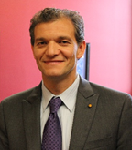
Biography:
Abu-Omar completed his PhD from Iowa State University and postdoc from Caltech. He is the R. B. Wetherill Professor of Chemistry at Purdue University, and the associate director of the Center for Catalytic Conversion of Biomass to Biofuels (C3Bio), an Energy Frontiers Research Center. Mahdi is the Founder and President of Spero Energy, Inc., a green specialty chemicals company and a technology provider for the manufacture of high value renewable chemicals from biomass. He has published more than 100 original research papers in peer-reviewed journals. Dr. Abu-Omar is a Fellow of the American Association for Advancement of Science (AAAS).
Abstract:
Transition metal catalysts have been an integral part of the success story of the petrochemical industry in the past century. Two grand challenges for this century are renewable energy and the utilization of green resources. Approximately 1.4 billion tons of lignocellulosic baiomss is an annually renewable source of energy and feedstock in the U.S. alone. The major components of biomass are cellulose, hemicellulose/xylan, and lignin- all polymeric and contain high percentage of oxygen. Current biomass utilization processes do not make use of lignin beyond its heat value. We have developed selective catalysts that convert lignin in intact wood biomass directly into two methoxyphenol chemicals, DHE and DMPP, leaving behind the carbohydrates as a solid residue. The lignin-derived methoxyphenols can be deoxygenated further to hydrocarbon fuels. Furthermore, the carbohydrate solid residue can be hydrolyzed and converted to fuels and chemicals via simple cascade catalytic reactions. Based on these results, a synergistic biorefinery is proposed in which both the lignin and carbohydrate fractions are utilized to make fuels and chemicals.
Lothar Brecker
University of Vienna, Austria
Title: Natural Products as Active Agents: On the Border between Sustainable Application and Risky Use

Biography:
Lothar Brecker received his diploma and PhD in Chemistry from the University of Dortmund in 1993 and 1996, respectively. After working at Graz University of Technology and Research Center Borstel, he became an Associate Professor at the University of Vienna. There he actually serves as Vice Dean of the Faculty of Chemistry, Director of the Chemistry Studies Program and Deputy Head of the Department of Organic Chemistry. His main research activities are in the fields of using NMR to study enzyme ligand binding, interactions between small molecules, and structure determination of natural products. He has published 90 papers in reputable journals.
Abstract:
Natural products from renewable resources have been applied in all parts of the world since beginning of time. It is hence obvious to use compounds from natural origins nowadays in sustainable concepts of Green Chemistry. Typical applications can be found in the fields of plant protecting agents, food additives and pharmaceutical drugs. However, an uncritical application of natural products can cause several problems. Nature optimized structures and concomitant functions of “applicable” natural products much earlier than human beings lived on earth. Therefore these compounds are not adapted to our necessities and we use them for purposes and in environments completely different from those originally intended by nature. Effects of the natural products to humans are also often influenced by structural changes during isolation or by formation of complexes in combined use with other compounds. The possibilities of these alterations have to be considered within isolation procedures and applications to avoid difficulties caused by unwanted effects of modified compounds from natural sources. Three examples are presented, which exemplary show chances and risks in the work up and application of natural products. First one deals with antifungal activity of compounds from Glycosmis species and structural changes during their isolation. The second example shows different chemical structures in the morphological very similar plants Carapichea ipecacuanha (Ipecac) and Ronabea emetica (false Ipecac), both causing comparable pharmaceutical effects. Finally the use of highly toxic aconitine from Aconitum carmichaelii in the Chinese tea ‘Si Ni Tang’ (SNT) is discussed.
Febee Louka
University of Louisiana, USA
Title: Comparing the effect of ecofriendly adsorbents and bioturbators on the concentration pyrene

Biography:
Febee Louka has completed her PhD in 2004, from Ohio University in Medicinal Analytical Chemistry. She is Associate professor in Analytical/Environmental Chemistry, at the University of Louisiana at Lafayette (ULL). She is a CoPI in million dollars grant on effect of oil spills. She was awarded the Outstanding Undergraduate Research Mentoring in 2014. She is also the awardee of Marvin and Warren Boudreaux / BoRSF Professorship in Chemistry at ULL (2012-2018). She was awarded the Summer Research Award Summer 2012. She has published more than 27 papers in peer reviewed journals and over 25 presentations in National and International meetings.
Abstract:
In the present study we intended to investigate and compare two methods that can be applied in case of oil spills. The waste produced in Louisiana such as sugarcane “Sacharum Officinarum” bagasse and crawfish “Austropotamobius pallipes” shells were used as low cost ecofriendly adsorbents. These adsorbents were used to examine the removal of pyrene one of the most abundant polycyclic aromatic hydrocarbons (PAHs). Pyrene is the precursor of benzo(a)pyrene the most common PAH to cause cancer. Sediment and water dosed with a known concentration of pyrene were used in this study. Microcosms containing beach sediment, seawater and bioturbators (the ghost shrimp “Lepidophthalmus louisianensis” or the razor clams “Tagelus Plebeius”) and dosed with pyrene were used for this study. Water, and sediment (surface and subsurface) samples were analyzed to determine the concentration of pyrene in them. The influence of bioturbators on biodegradation and distribution the petroleum hydrocarbon under investigation in sediments of coastal ecosystems was tested in day 1 and day 15 from dosing day. Sediment bioturbators often function as ecosystem engineers, moving large amounts of sediment and changing sediment characteristics. During the biological transport of sediment, pyrene in the sediment will move as well. Pyrene in water samples was extracted using liquid-liquid extraction. Microwave Extraction was used for sediment samples. PAH under investigation extracted using both treatments were analyzed using gas chromatography with flame ionization detector (GC-FID). Preliminary results indicated that the concentration of pyrene decreased significantly using the sugarcane bagasse within hours, whereas it took days for crawfish shells to absorb pyrene. On the other hand, in presence of both the bioturbators especially ghost shrimp the concentration pyrene decreased compared to the controls that are under the same condition in absence of the marine animals.
Craig L. Hill
Emory University, USA
Title: Green fuel. Selective and water compatible catalysts for solar fuel production

Biography:
Craig L. Hill trained at MIT (PhD; Whitesides) and Stanford (NSF PD; Holm) and is the Goodrich C. White Professor of Chemistry at Emory University. He studies catalysis (green oxidations; multielectron processes, decontamination, others), mechanisms and materials. He has trained ~130 graduate students and postdocs. Google Scholar lists ~340 journal publications that are cited 20,065 times (H index = 72). Three of these already exceed 1000 citations. He has been the recipient of three ACS awards, many others and is a member of two academies.
Abstract:
In order to meet global requirements for environmental preservation and adequate energy for society, it will be necessary to develop green, sustainable sources of energy on a massive scale. Unfortunately the renewal energy sources don’t have the capacity to power the planet, with the exception of solar (terrestrial sunlight). Sadly, nuclear fusion still faces monumental challenges. In addition, we must have fuel energy, not just electrical energy because most major energy needs (air travel, shipping, etc.) require high-density energy. This explains the enormous international effort to realize solar fuel (do artificial photosynthesis). The 2 principal reactions in solar fuel production are splitting of water and reduction of CO2 by H2O to generate H2 and carbon-neutral fuel, respectively. The Hill group efforts have shifted in recent years from green catalytic selective oxidations of organic substrates to selective catalytic oxidative removal of toxic molecules in human and natural environments, and the extremely active research area of catalytic water oxidation, which is essential for making solar fuel. Many of the key requirements for successful, green oxidations of organic substrates and water are the same: catalysts that are highly selective, stable and fast and that proceed by known and controllable mechanisms to minimize waste and facilitate green operation. We will address these points and end with describing polyoxometalate (POM)-based water oxidation catalysts (WOCs) that are among the most effective, if not the most effective, homogeneous WOCs known at present.
Soon H. Hong
Seoul National University, Korea
Title: Atom-Economical and Sustainable C-N Bond Formation Reactions from Alcohols and N-Sources via Catalytic Hydrogen Transfer Reactions

Biography:
Soon Hyeok Hong obtained his PhD in 2007 at the California Institute of Technology, under the guidance of Professor Robert H Grubbs. After having Postdoctoral research experience at the University of California, Los Angeles and industrial experiences at Materia, Inc., he began his independent career in academia as an Assistant Professor at Nanyang Technological University with a joint appointment as a National Research Foundation Fellow of the Singapore government in 2008. In 2011, he moved back to his undergraduate school, Seoul National University, where he has been working on green organo metallic catalysis in developing efficient, practical, and sustainable synthetic methods.
Abstract:
Development of useful, practical, and selective synthetic methods that generate minimal by-product is of critical importance in both academic and industrial research. The research of our group seeks to develop practical and environmentally friendly synthetic methodology using transition metal catalysts. Specifically, we have explored novel C–N formation reactions from primary alcohols and various N-sources, chemical synthesis using CO2 and methanol as C1 sources, and development of organometallic catalysts based on N-heterocyclic carbene ligands. Direct C–N formation reactions from alcohols and N-containing molecules is a highly atom economical transformation producing hydrogen as the sole byproduct. Well-defined N-heterocyclic carbene based Ru complexes were developed as highly active pre catalysts based on the mechanistic insight suggesting a Ru hydride species as an active catalytic intermediate. With the developed catalysts, various novel C–N formation reactions for the synthesis of amides, imides, ureas, and amines were achieved. The developed catalytic systems involving hydrogen transfer have been also applied to CO2 reduction and methanol activation. With these sustainable C1 sources, reactions developments are actively ongoing in our group. Lastly, our recent researches on homogeneous catalyst development based on N-heterocyclic carbene and pincer ligands will be presented.
Miguel Yus
University of Alicante, Spain
Title: Atom and Step Economy in Synthetic Organic Chemistry
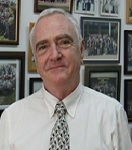
Biography:
Miguel Yus has completed his PhD in 1973 at the University of Saragossa (Spain) and postdoctoral studies from the Max Planck Institute in Mülheim Ruhr (Germany). After returning to the University of Oviedo (Spain) he became Associate Professor in 1978 and full Professor in 1987 at the same university. In 1988 he moved to his current position at the University of Alicante (Spain). He has been invited professor at the ETH Zürich, and the universities of Oxford, Harvard, Uppsala, Tucson, Okayama, Paris, Strasbourg, Bologna, Sassari, Tokyo, and Kyoto. He is coauthor of more than 500 papers and 5 patents.
Abstract:
One important task concerning any chemical process has to do with the so-called atomic efficiency (AE), which can modify considerably the concept of yield corresponding to a chemical reaction: even working with a high chemical yield a reaction can be not efficient when the main part of the reactants structure is not included in the final product. Two interesting processes will be the subject of this presentation: (a) The hydrogen autotransfer reaction, in which an alcohol is used as electrophilic component, for instance, in the alkylation of a carbonyl compound, water being the only byproduct in the process, that is, therefore, of great value from an atom efficiency point of view; and (b) the multicomponent reaction, such as the aza-Sakurai reaction, or the diastereoselective allylation of imines, of considerable interest from a step efficiency point of view.

Biography:
Xilin Xiao received his master degree of health toxicology from University of South China, PR China in 2004, and PhD in analytical chemistry in 2010 from Hunan University. From 2011 to 2012, he left to the University of Florida joined the WeihongTan’s Research Group as a visiting scholar. He is currently a full-time associate professor in the College of Chemistry and Chemical Engineering, University of South China, PR China. His primary research interests concern the chem/biosensors.
Abstract:
This paper describes the real-time quantification of human osteosarcoma cell (MG-63) concentrations and evaluation of the cytotoxicity of the anticancer drug cisplatin using a wireless magnetoelastic sensing device. The sensor is fabricated by coating a magnetoelastic ribbon-like sensor with a layer of polyurethane that protects the iron-rich sensor from oxidation and titanium dioxide nanotubes upon the surface of polyurethane provides a cell-compatible surface. The titanium dioxide nanotubes (TiO2 NTs) are easy to be dispersed at substrate and spread around on the surface of polyurethane. In response to a time-varying magnetic field, the magnetoelastic sensor longitudinally vibrates, emitting magnetic flux that can be remotely detected by a pick-up coil. No physical connections between the sensor and the detection system are required. The wireless property facilitates aseptic biological operation, especially in cell culture as illustrated in this work. The resonance frequency changes in response to properties changes of a liquid culture medium and cells adhesion to the sensor as MG-63 consumes nutrients from the culture medium in growth and reproduction. The adhesion of cells on the sensor’s surface results in a decrease in the resonance frequency and the amount of adhesion was proportional to the cell concentration. A linear response was obtained in cell concentrations of 1×104 ~ 2×107 cells mL-1, with a detection limit of 1×104 cells mL-1 at a noise level of 20 Hz.
Aiichiro Nagaki
Kyoto University, Japan
Title: Organolithium Chemistry Using Flow Microreactors to Green Chemistry

Biography:
I received his PhD in 2005 from Kyoto University under the supervision of Professor Jun-ichi Yoshida. I worked with Professor Hiroaki Suga, Tokyo University from 2005 as a postdoctoral fellow. In 2006, he became an assistant professor of Kyoto University. I was promoted to lecturer in 2013. My current research interests are organic synthesis, polymer synthesis, and microreactor synthesis. Awards: Takeda Pharmaceutical Co., Ltd. Award in Synthetic Organic Chemistry, Japan (2012), Incentive Award in Synthetic Organic Chemistry, Japan (2012), and Young Innovator Award on Chemistry and Micro-Nano Systems (2013).
Abstract:
Protecting-group-free synthesis has received significant recent research interest in the context of ideal synthesis and green sustainable chemistry. In general, organolithium species react with electrophilic functional groups very rapidly, and therefore such functional groups should be protected before an organolithium reaction, if they are not involved in the desired transformation. If organolithium chemistry could be free from such a limitation, its power would be greatly enhanced. A flow microreactor enables such protecting-group-free organolithium reactions by choosing the appropriate residence time and the reaction temperature. Organolithium species bearing alkoxycarbonyl, nitro, and ketone carbonyl groups can be generated and reacted with various electrophiles using a flow-microreactor system. In addition, asymmetric carbolithiation of conjugate enynes can be also achieved without the epimerization of a configurationally unstable chiral organolithium intermediate based on precise control of the residence time using a flow microreactor. In this presentation, we report that a flow microreactor system enables the generation of various unstable organolithium compounds.
Capucine Sassoye
UPMC University, France
Title: New Versatile Nanostructured Catalysts: from Green Preparation to Environmentally concerned Challenges

Biography:
Capucine Sassoye is Maitre de Conférences at UPMC. She is currently working on hybrid and inorganic nanomaterial, coupling the sol-gel chemistry with advanced processing to tune both the macroscopic shape and the texture of the materials. One particular research deals with sustainability, concerning both material synthesis and its further applications. She has so far authored/co-authored 25 peer-reviewed journal articles and given 5 presentations in international meetings.
Abstract:
Effective catalysts that could assess multiple environmental issues are nowadays needed, in a context of growing societal awareness and newly appeared environmental legislations. Challenges for these catalysts are numerous: Their production has to be as green as possible, fast and easy to handle; their use conditions have to be as soft as possible without compromising the requirements for high selectivity and high activity; they have to be nearly indefinitely reusable. These drastic requisites have oriented research toward soft preparation methods[1] leading to nanostructured heterogeneous catalysts in which very active species are designed at the nanoscale. Our work aims at developing innovative nanostructured ruthenium based catalysts with, as chosen fields of investigation, the methanation of CO2 (valorisation of CO2)[2], the total oxidation of volatile organic pollutants [3] (treatment of gas effluents from incineration and biomass cogeneration units) as well as soft conditions ammoniac synthesis [4]. In supported catalysis, although the primary role of the support is often thought to be limited to physical dispersant for intact metal active nanoparticles, it is now recognized that the metal-support interactions clearly influence the catalytic activities and/or selectivity. Moreover, supported RuO2 nanoparticles have clearly showed the ability to migrate over the support surface upon thermic treatment, this phenomenon being strongly support-dependent. This epitaxially-driven migration provokes decisive modifications in the catalyst and can be exploited to tune the catalyst active phase morphology, localization and thus activity.
Jennifer L Anthony
Kansas State University, USA
Title: Sustainable development of infrastructure for electric vehicles

Biography:
Jennifer L Anthony joined the Kansas State University chemical engineering faculty in 2005 and completed her PhD at the University of Notre Dame and her Postdoctoral studies at California Institute of Technology. Larry E Erickson has more than 50 years of experience as a member of the chemical engineering faculty at Kansas State University. His research with solar powered charge stations is supported by Black and Veatch and National Science Foundation projects 1156549 and 1460776
Abstract:
Over 3, 20,000 plug-in vehicles were sold in 2014. An infrastructure of solar powered charging stations (SPCSs) in parking lots that would provide electricity to the grid, shade for parked cars, and convenient electric vehicle (EV) charging at many locations would help both green electricity production and EV sales. Two significant green chemistry challenges are in solar energy and energy storage. New developments in batteries that would reduce costs significantly might reach a value of one trillion dollars. Convenience, availability, and shade are social benefits associated with SPCSs. Greenhouse gas emissions can be reduced significantly by adding SPCSs to parking lots in all parts of the world. In the US there is the potential to generate about 1/3 of the present amount of electricity with SPCSs in parking lots. Because EVs have no emissions, there is the potential to improve air quality throughout the world with EVs and SPCSs. The cost of SPCSs can be reduced through green chemistry that improves the efficiency of solar panels and the manufacturing process. One of the benefits of SPCSs and EVs is the reduced cost of transportation and the increased availability of petroleum and natural gas over the next 100 years.

Biography:
Deia Abd El-Hady has completed his PhD in Analytical Chemistry from Assiut University, Egypt joined with University of Bologna in Italy. He got postdoctoral grant by DAAD to study at Technical University of Braunschweig, Germany. Currently, he is an associate professor in University of Jeddah, Saudi Arabia. He has published more than 50 papers in reputed analytical journals.He included in the editorial board of several journals.
Abstract:
The analysis of analytes is considered one of the most challenges in capillary zone electrophoresis (CE). Fundamental studies on the new green separation of acrylamides by ionic liquid collapse capillary electrophoresis (ILCCE) are presented. The sample solution of the neutral analytes is prepared using ionic liquid 1-butyl-3-methylimidazolium bromide mixed with water as a dissolution solvent in order to increase the conductivity of the sample greater than the BGS. This separation mechanism was used to enrich the sensitivity separation of acrylamides with good resolution. Here, the effect of retention factor of the analyte, conductivity ratio of the sample and BGS, IL concentration in the sample and electrolyte salt concentration in the BGS were examined. A study on the effect of the injection technique to the performance of ILCCE is also presented. The new hyphenation of ILCCE with ionic liquid based ultrasound assisted liquid extraction was successfully applied to the rapid and selective analysis of acrylamide in breads.

Biography:
Medhat A. Shaker has completed his PhD at the age of 31 years from Alexandria University (Egypt) in collaboration with Northeastern University (USA). He is Associate Professor of Physical Chemistry at Damanhour University (Permanent, Egypt) and at University of Jeddah (Current, Saudi Arabia). He has published more than 25 papers in reputed journals and has been serving as a reviewer for a number of highly impacted peer-reviewed journals.
Abstract:
Solifenacin succinate, a pharmaceutical used in industry is an organic contaminant that has the potential to create environmental toxicity and pollution problems and cause health risks for humans as well as biota. Natural organic matters, such as humic acid, HA in aquatic environments can increase the stability of nanoparticles. In this work, solifenacin succinate in wastewater was removed by a biosorption method using HA-coated TiO2 nanoparticles. The FTIR, EDX and FESEM studies were used to characterize the fabricated nanosorbents. Mathematical adsorption and kinetics models representing the biosorption processes were formulated, supporting the Langmuir isotherm and pseudo-second order rate equation for the adsorption of aqueous solifenacin succinate using batch mode experiments. All parameters influencing the removal efficiency such as: adsorbent dose, medium pH, initial adsorbate concentration and temperature were considered for optimizing the experimental conditions. Thermodynamic study was carried out to describe the feasibility, thermic and entropic behaviors of the investigated biosorption process. The results showed that the method developed here is very effective for the removal of solifenacin succinate from an aqueous environment.
Sunil Joshi
National Chemical Laboratory, India
Title: De-polymerization of sugarcane bagasse lignin to value added products in sub and supercritical water

Biography:
Sunil Joshi leads a research group at the National Chemical Laboratory and has been active in the area of catalysis and Process development for the last 25 years. He has extensive experience in process intensification, scale up studies and responsible for several technology transfer in fine and specialty chemicals. Current research interests involve chemical applications of supercritical fluids, with particular emphasis on conversion of biomass to value added chemicals and carbon dioxide utilization. The focus is mainly at understanding the fundamental chemistry in supercritical fluids and at developing environmentally acceptable processes and materials.
Abstract:
The use of alternative solvents for development of cleaner and renewable processes for industrially useful chemicals is an important area of Green Chemistry. Biomass is a regenerative resource for energy and chemical production. Lignin is abundantly available and has potential to be utilized as renewable source for industrially useful chemicals. This work is associated with investigation of supercritical water as an alternative solvent in clean technologies. The lignins were de-polymerized at subcritical and supercritical conditions of water using oxidizing, non-oxidizing and catalytic environment. The effect of various reaction parameters such as pH, temperature, pressure, residence time and catalyst concentration was investigated. It was observed that the lignin on de-polymerization leads to catechol, vanillin, acetovanillone and homovanillic acid as major products while syringic acid and guaicol were found to be minor products. The lignin on de-polymerization under non-oxidizing conditions favors the formation of more hydrolyzed products resulting into formation around 15% monomers while under catalytic conditions gives around ~ 50 % monomer carbon balance. It has been observed that the lignins on de-polymerization under oxidizing conditions results into enhancement of the carbon balance from 25 % to 50 % due to formation of more break-down products. The continuous reactor designed in two sections resulted into enhanced de-polymerization of lignin. In the first stage the lignin polymer undergoes hydrolysis by breaking ether linkages while in the second stage catalytic oxidization of the oligomers formed occurs, which improved the yields of the break-down monomers significantly.
Kwang-Leong Choy
University College of London, UK
Title: Towards sustainable surface processing and products through green chemistry and engineering

Biography:
Kwang-Leong Choy obtained her D.Phil. from the University of Oxford in materials science. She joined Imperial College London in 1994 as a faculty staff. In 2002, she took up a Chair in Materials at the University of Nottingham. She is now a Director of the Institute for Materials Discovery at University College London. Her research interest focuses on the development of novel, cost-effective, sustainable non-vacuum chemical vapour processing of nanomaterials, functional superthin/thin films, nanocomposite coatings for various structural and functional applications in aerospace, clean energy, and materials engineering and biomedical sectors.
Abstract:
The global drive towards the reduction of energy consumption, emissions and minimisation of waste are increasingly important and becoming major technological, political and societal issues. A promising approach to address the current challenges is to adopt green chemistry and sustainability during process design, innovation, integration and optimisation. The use of green chemistry and process intensification in the processing of polymeric, inorganic and composite materials will be described. The emerging of eco-friendly and sustainable non vacuum chemical processing technologies will be presented for the production of nanostructured materials and high value added superthin/thin films and thick coatings. These processes that are not only low cost, less polluting, conserve energy, reduce waste but also increase efficiency and enhance product performance. Case studies leading to sustainable products and increasing profits for a variety of applications, including fine chemicals, clean energy, engineering, and biomedical sectors will be presented.
Pengxiang Zhao
Science and Technology on Surface Physics and Chemistry Laboratory, China
Title: Triazole Stabilized Transition Metal Nanoparticles for 4-Nitrophenol Reduction

Biography:
Pengxiang Zhao was born in Chengdu, China. He completed his PhD in 2012 in the group of Prof. Didier Astruc at the University of Bordeaux on the application of gold nanoparticles for docetaxel delivery. Then he did his post-doc at Hongkong Polytechnic University with Prof. Kwok-Yin Wong in 2013. He is currently an independent researcher at the Science and Technology on Surface Physics and Chemistry Laboratory at Mianyang, Sichuan, China. Now, he is leading a group there and his research interests concern nanomaterials and metal catalysis.
Abstract:
In the past few decades, a variety of ligands have been synthesized and used to stabilize gold nanoparticles (AuNPs) either in organic solvents or in water. The surface properties, including ligand type, binding force of Au with other atoms, as well as the ligand coverage of AuNPs control the solubility, stability and applications of AuNPs. For example, in thiolate-stabilized AuNPs,covalent bonding of Au-S contributes to the passivation of the surface of thiolate-stabilized AuNPs and makes AuNPs stable in solid state, whereas citrate stabilized AuNPs were usually prepared in aqueous solution due to themulti-package of ionic species on the AuNPs surface.2In addition, the influence of surface properties to AuNPs was also observed in several examples on the coordination-induced stabilization of AuNPs with nitrogen donors, particularly, dendritic supramolecules. PAMAM dendrimers shows significant template effects in the formation of NPs in various solvents. Copper-catalyzed azide alkyne (CuAAC) “click” chemistry has generatedsuper molecules such as PEG-terminated dendrimers and polymers also stabilizing AuNPs in aqueous solution. Besides, many other nitrogen ligandssuch as imidazoles, pyridines and others have also been utilizedfor the stabilization of AuNPs. In our previous reports, it is found that the copper-catalyzed azide alkyne (CuAAC) cyclyoaddition i.e. “Click” reaction could yield triazole functionalized PEG (triazole-PEG) to stabilize AuNPs by triazole-AuNPs (trz-AuNPs) bond in aqueous solution, and these AuNPs exhibited an excellent catalytic activity towards the 4-NP reduction. In order to extend the investigation of trz-MNPs for catalysis, we now report the full syntheses and characterizations on a group of triazole-PEG stabilized MNPs, then optimize and evaluate their catalytic reactivity towards the 4-NP reduction.
Mostafa Baghbanzadeh
Harvard University, USA
Title: Nanocatalysis and Continuous-Flow Processing: Towards Greener and more sustainable Chemistry

Biography:
Mostafa Baghbanzadeh completed his PhD in Organic Chemistry at Shahid Beheshti University of Tehran. Then, he joined Kappe’s lab at the University of Graz, serving as a group leader for studies on synthesis and application of nanocrystals using microwave and continuous-flow technologies. Since April 2013 he is a postdoctoral fellow in the Whitesides lab at Harvard University. He has published 53 publications in per-reviewed journals which are cited more than 2000 times, and his h-index is 25. His research interests are orgainc synthesis, catalysis, nanomaterials, green and sustainable chemistry, organic electronics, and reaction networks.
Abstract:
Colloidal nanocrystals (NCs) are solution-grown, nanometer-sized, inorganic particles that are stabilized by a self-assembled monolayer (SAM) of surfactants attached to their surface. NCs possess useful properties that are controlled by their composition, size and shape, and the SAM coating ensures that these structures are easy to fabricate and process further into more complex structures. This combination of features makes colloidal NCs attractive and promising building blocks for advanced materials, green chemistry, and specifically in catalysis. Colloidal NCs are potentially able to blend the many advantages of heterogeneous catalysis with the versatility of homogeneous catalysts. This presentation will focus on: i) Advantages of continuous-flow processing in in-situ preparation of Fe3O4 NCs from a Fe (e.g., FeCl2•4H2O, FeCl3•6H2O, and Fe(OAc)2) precursor using hydrazine hydrate as the reducing agent to catalyze the organic reactions (e.g., reduction of nitroarenes). ii) Shape-selective synthesis TiO2 colloidal NCs and their application in a continuous-flow photocatalytic transformation.
Nabil H Elsayed Khamis
National Research Center, Egypt
Title: Gelatin wastes for better plant growth

Biography:
Nabil Hussein El-Sayed khamis has completed his PhD at the age of 37 years from Politehnica University of Bucharest. He is the Eminent Professor at Chemistry of Tanning and leather Technology Department. He has published more than 90 papers in reputed journals and participation of 15 scientific conferences around the world.
Abstract:
Gelatin, E number: 441 is an animal protein derived through acid, alkaline, or enzymatic hydrolysis of collagen extracted from hides and or skin of boiled crushed bones, connective tissue organs, chicken, pigs and horses. It has many nutritional and industrial applications, mainly in food and pharmaceutical products. The worldwide production of gelatin is about 300.000 tons per year. Gelatin is unusually high in the non-essential amino acids as glycine, proline and hydroxyproline, while lacking certain essential amino acids. During its production it releases about 10% wastes which are not hydrolysed at production temperature 60°C. The aim of this work is to use these wastes instead of being thrown away causing environmental pollution. The wastes were hydrolysed using a mixture of H2SO4 and H3PO4 acids at pH=1 thus yielding a solution of 5% of amino acids, in addition to the valuable elements S, P, Zn, Mg, Mn, Fe, and K, the latter element was introduced through neutralization with KOH to pH=6 while Zn, Mg, Fe were present in the original waste. Because of the nature of the produced solution and to ensure ease application the shelf life of the produced amino acid liquids was improved to reach one year. The completely hydrolysed product was used as a nutrient to agricultural land and exhibited 37% increase in yield crops.
Yan Xiong
Southwest Petroleum University, China
Title: Fabrication of miniaturized capillary waveguide integrated fiber-optic sensor for fluoride determination in water

Biography:
Yan Xiong has completed her PhD at the age of 29 years from Dalian Institute of Chemical Physics, Chinese Academy of Sciences. Dr. Yan Xiong got the DICP-Corning Award, won a first prize from the China Association for Instrumental Analysis, and received the honor of Liaoning provincial excellent graduate. She has published more than 20 papers in reputed journals.
Abstract:
Fluoride concentration is a key aspect of water quality and has an essential role in human organisms. Too much or too little fluoride intake from water supplies is harmful to public health. In this work, a capillary waveguide integrated fiber-optic sensor was fabricated for in-situ measurement of fluoride in water samples. The sensor was modularly designed with three parts, including light source, capillary flow cell and detector. When light propagated from a light emitting diode (LED) to the capillary waveguide cell through an excitation fiber, it interacted with sensing reagents and its intensity changed with different fluoride concentrations. Then the light propagated to the detector through a detection fiber for absorption determination of fluoride according to Beer’s law. By using easily accessible capillary tube, silica fiber and cheap LED, the sensor was successfully miniaturized and fabricated with low cost for in situ measurement of fluoride. This miniaturized sensor showed advantages of fast analysis (9.2 s), small reagents demand (200 μL), lower detection limit (8 ppb) and high selectivity. Fluoride in different water samples were determinated using this sensor. The results obtained were compared with those obtained by conventional spectrophotometry, showing agreement and validating the sensor’s potential applications.
Olga V Shuvaeva
Novosibirsk State University, Russia
Title: The study of trace elements uptake by plants from contaminated waters

Biography:
Olga V Shuvaeva did her PhD in 1988, Dr. of Sci. in 2009 and is the Head of Environmental Chemistry Chair of Natural Sciences Department in Novosibirsk State University (Russia). She has published more than 100 papers in reputed journals. Her fields of interest are: the study of trace elements transformation and transport in Environment. She is an expert in analytical chemistry of natural media using atomic spectrometry and separation techniques.
Abstract:
The concept of green chemistry is focused on the prevention of environmental pollution as a result of human activity. However, there are a lot of contaminated areas in the world which pose a serious threat to ecosystems in terms of their conservation. Therefore, following the principles of green chemistry it should not be forgotten about the need to clean these areas. Phytoremediation technology is an effective sustainable, energy and cost economic method of environment clearing due to the plants ability to hyper-accumulation of the pollutants. The floating macrophyte water hyacinth, Eichhornia crassipes (EC) and Pistia stratiotes (PS) are applied most often to waste waters purification. The ability of the plants to uptake the trace elements depending on the conditions of exposure using the natural modeling mesocosm methodology approach as well as in the real gold mine tailing area was studied. In both cases bioconcentration (BCF) and translocation factors (TF) of water hyacinth were evaluated to characterize their accumulation capacity. It has been shown that water hyacinth demonstrates high ability to accumulate Cd, Cu, Pb, Mo and Ba with BCF values at the level of 1400 and higher. The general trend of the plant accumulation ability in relation to the studied elements corresponds to their content in the medium. It was found that the plants can survive under extreme conditions and hence we can assume that there is a principal opportunity to use them for the valuable substances extraction from an area of the mining waste dumps burial.
John A Glaser
US Environmental Protection Agency, USA
Title: Sustainable chemistry/engineering innovation

Biography:
John Glaser holds a PhD in organic chemistry from the University of Georgia and has conducted research at the US Environmental Protection Agency for 36 years. He holds position as editor and advisory board member on several scientific journals. He has a collection of book and journal articles ranging from oil spill remediation development to environmental analytical criteria and beyond to applications of remote sensing to environmental issues.
Abstract:
Remarkable opportunities to develop new sustainable technology processes are attractive due to the need of technology responsive to environmental limitations. It is important to be able to understand where the innovation of these new technologies was encountered and additional fertile areas for future contribution to sustainable technology. The inspection of innovation sources can be daunting. A research effort designed to connect green chemistry/engineering with innovation may assist the general needs for sustainable technology scrutiny. This investigation has developed a metric to permit an assessment of green chemistry components contributing to new chemical process development and innovation at several stages of development. Principles used to design green processes can be employed in the assessment of the new technology involved. The design of sustainable chemical processes and products aimed at the reduction or elimination of hazardous substance (chemical) use has been quite fruitful in the field of green chemistry/engineering. Complementary sets of green chemistry and green engineering principles have provided the directions involved in this paradigm shift. These metrics are used to evaluate the contribution of each feature of innovative process development. Features contributing to innovation are expected to vary across the landscape of discovery to established chemical processes. The importance of sustainability in the design of new molecules at various levels of new chemical development now becomes relevant to discovery, process economics and public acceptability.
J S Yadav
Indian Institute Of Chemical Technology, India
Title: Green Methods for New Chemical Entities (NCE’s)

Biography:
J S Yadav completed his PhD from M.S. University, Baroda and Postdoctoral studies at Rice University, Houston, USA. He was the Director of the prestigious Indian Institute of Chemical Technology, Hyderabad for over a period of 9 years and presently is serving as CSIR Bhatnagar Fellow at the same Institute, a premier scientific research organization. He has published more than 1100 papers in reputed journals and has been serving as an Editorial Board Member of repute. He received several prestigious awards and honors like CSIR Shanti Swarup Bhatnagar Award in the year 1991, Fellow of Indian Academy of Sciences (FASc) in the year 2010 and Highest honor as Laureate of the 22nd Khwarizmi International Award for his excellent contributions as a research scientist.
Abstract:
Water mediated organic reactions are very useful in view of environmental consciousness. Therefore, organic transformations that are performed in water will be discussed in details. In particular, transition metal catalyzed transformations in the synthesis of heterocycles will be discussed. The use of water tolerant Lewis acids such as indium salts, scandium triflate will be demonstrated for the C-C, C-N and C-S bond formation. In addition, a few indium-mediated transformations like Barbier type allylation reaction of carbonyl compounds, epoxides, acetals, reduction of N-oxides and reductive alkylations of azides which are performed in water will be discussed as they are simple, convenient and environmentally friendly.
Yan Xiong
Southwest Petroleum University, China
Title: Fabrication of miniaturized capillary waveguide integrated fiber-optic sensor for fluoride determination in water

Biography:
Yan Xiong, Chemistry Doctor (Ph.D.-chemistry), now is an Associate professor of Analytical Chemistry. She got her B Sc in chemistry education, M Sc in analytical chemistry, Specialist in analytical chemistry, Chemistry Doctor's degree (Ph.D.) at Dalian Institute of Chemical Physics, Chinese Academy of Sciences. And Dr. Yan Xiong got the DICP-Corning Award in 2010, won a first prize from the China Association for Instrumental Analysis in 2010, and received the honor of Liaoning provincial excellent graduate in 2010. Currently Dr. Yan Xiong’ researches focus on the fiber-optic chemical sensors for the determination of species in water environment and oil-gas.
Abstract:
Fluoride concentration is a key aspect of water quality and has an essential role in human organisms. Too much or too little fluoride intake from water supplies is harmful to public health. In this work, a capillary waveguide integrated fiber-optic sensor was fabricated for in-situ measurement of fluoride in water samples. The sensor was modularly designed with three parts, including light source, capillary flow cell and detector. When light propagated from a light emitting diode (LED) to the capillary waveguide cell through an excitation fiber, it interacted with sensing reagents and its intensity changed with different fluoride concentrations. Then the light propagated to the detector through a detection fiber for absorption determination of fluoride according to Beer’s law. By using easily accessible capillary tube, silica fiber and cheap LED, the sensor was successfully miniaturized and fabricated with low cost for in situ measurement of fluoride. This miniaturized sensor showed advantages of fast analysis (9.2 s), small reagents demand (200 μL), lower detection limit (8 ppb) and high selectivity. Fluoride in different water samples were determinated using this sensor. The results obtained were compared with those obtained by conventional spectrophotometry, showing agreement and validating the sensor’s potential applications.
Amr A Yakout
University of Jeddah, Jeddah, Saudi Arabia
Title: Fast and effective removal of tetracycline and doxycycline from milk samples by β-cyclodextrin functionalized magnetic graphene oxide nanoparticles

Biography:
Amr A. Yakout has completed his PhD at the age of 30 years from Alexandria University-Egypt. Now, I am associate professor of analytical chemistry in the faculty of science- University of Jeddah, Jeddah, Saudi Arabia. Two years ago, I was an associate professor of analytical chemistry in the faculty of science-Alexandria University-Egypt. I published more than 15 papers in reputed journals.
Abstract:
Graphene oxide (GO) based magnetic nanocomposites have been currently used as an attractive adsorbent for removal of pharmaceutical wastes from water samples of different matrices. In the present study, β-cyclodextrin functionalized magnetic graphene oxide Fe3O4/GO/ β-CD magnetic nanoparticles (MNPs) were synthesized and successfully applied adsorbents for the removal of tetracycline (TC) and doxycycline (DC) from different milk samples. Fourier transform infrared spectrometry (FT-IR), transmission electron microscopy (TEM), Thermal gravitational analysis (TGA), vibrating sample magnetometer (VSM) and X-ray diffraction (XRD) were used to detect the surface morphology and characterize the nanocomposite. The effects of adsorbent dosage, pH, time and temperature were investigated on the adsorption properties of TC and DC onto Fe3O4/GO/ β-CD MNPs. The equilibrium adsorption data were analyzed using the Langmuir and Freundlich isotherms. The kinetics data for the adsorption of TC and DC onto Fe3O4/GO/β-CD MNPs were modeled using the pseudo-first-order, pseudo-second-order, Elovich and intra-particle diffusion linear kinetic equations. The nanocomposite showed good dispersibility and reusability after three adsorption-desorption cycles. The results showed the Fe3O4/GO/β-CD MNPs had a good adsorption ability to remove TC and DC from aqueous and milk samples.
Rebekah Brosky
Florida Gulf Coast University, USA
Title: What is the Role of Diffuse Double Layer (DDL) Processes During Electrolytic Reduction in a Low-Oxygen Environment?

Biography:
Rebekah Brosky has completed her PhD in cooperation with the Centre for Green Chemistry at Monash University, Australia, in 2008. The current work was completed during her Postdoctoral studies in the Department of Civil and Environmental Engineering at Lehigh University, Pennsylvania. She currently teaches General Chemistry and environmentally-themed courses at Florida Gulf Coast University, Florida.
Abstract:
Heavy metals typically accumulate in reduced bottom sediments after being discharged into waterways by industrial and municipal processes. Copper in particular is widely used as a major component of electronic devices. Cu(II), the most prevalent form of Cu in the natural environment, is highly water soluble. A laboratory experiment was conducted inorder to determine if abundance of clay in the bottom sediments of a Cu-contaminated aqueous ecosystem could enhance electrolytic reduction of the heavy metal to the less mobile (Cu(0) or Cu(I)) forms. Cu(NO3)2*2.5H2O was added to simulate a moderately contaminated system with 650 μg Cu/ml kaolinite clay-water slurry. A constant electrical potential of 1.0 V/cm was applied across platinum wire electrodes inserted into the continuously stirred system for four days while the system ORP was monitored and periodic sub-samples were taken for analysis. The electrical as well as the chemical results indicate that the quantity of Cu(II) being reduced to Cu(I), especially within the aqueous phase, is increased within the first 48 hours of experimentation by the presence of kaolinite clay up to 0.05mg clay/liter slurry. Though an electric current is necessary to initiate and sustain the non-spontaneous redox reaction, we were able to demonstrate that the clay content of the soil matrix itself may determine the subsequent efficiency of the reduction process. Under an applied current, the clay DDL behaves as capacitor for charge storage in this natural system and is aiding the heavy metal clean-up process.
Niranjan Karak
Tezpur University, India
Title: BIO-BASED Biodegradable Hyperbranched Polymers and Their Nanocomposites as Sustainable Advanced Materials

Biography:
Niranjan Karak has completed his PhD from Indian Institute of Technology; Kharagpur in 1998, Postdoctoral studies from the Korean Advanced Institute of Science and Technology in 2001. He was a Visiting Professor of Prof. Cho’s Laboratory of Konkuk University, South Korea in 2007 and Guest Research of IPF Dresden, Germany in 2008. He is the Head of Advance Polymer and Nanomaterial Laboratory and Former-Head of Department of Chemical Sciences. He has published more than 158 papers in reputed journals and 03 books. He has also produced 12 PhD and 08 are pursuing for the PhD degree.
Abstract:
The huge demands of petroleum products with ever increasing world population, sophistication and comfort in life in one hand; depletion of oil reserves, threats of global warming and stringent environmental rules and regulations on the other, incline researchers to maximize the utilization of naturally renewable resources as the feedstock for the development of above products. In this milieu, bio-based three dimensional hyperbranched polymers have sculpted their own niche because of favorable properties over their conventional linear analogs. So a large variety of industrially important bio-based hyperbranched polymers are being reported from this laboratory. These hyperbranched polymers are mainly synthesized by Ax + By (x, y ≥2) approach using slow addition and high dilution technique. This approach follows the dictated of ‘Green Chemistry’, achieve high carbon credits and maintain the triple bottom line concept. However, to improve the performance and to address the advanced requirements of such polymers, a large number of nanocomposites of such hyperbranched polymers with almost all types of nanomaterials are investigated from this laboratory. The resultant nanocomposites exhibited significant improvement of many desired useful properties including mechanical, thermal, chemical, biological, etc., along with antimicrobial, antistatic, fluorescent, shape memory, biocompatibility, etc. depending on the nature of used nanomaterials. The overview of all these results from synthesis to properties evaluation, including various advanced applications will be discussed in this conference. The talk will address the sustainability protocols for obtaining such advanced polymeric materials from low cost, readily available naturally renewable resources.
Patricia Forcen
SABIC Innovative Plastics, Spain
Title: Review of Sustainable Polymers in the last Decades and their promising Future

Biography:
Patricia Forcén obtained her PhD between the University of Zaragoza (Spain) and the Technical University of Denmark (DTU) in 2007. The main area of her study was related to the synthesis of block copolymers by Atom Transfer Radical Polymerization (ATRP) for volume holographic storage. Previously to her PhD, she got several industrial exposures by Procter & Gamble in Belgium and Philips in the Netherlands. From 2007 she has been working by SABIC, currently as Lead Scientist, developing and improving new synthetic processes.
Abstract:
The research of the scientific community in the last decades has increased the activity related to new green alternatives to manufacture polymers. The two main areas to study are: - New natural monomers sources (renewable compounds) - Environmentally friendly processes With the advancements in synthesis technologies and the finding of new renewable functional monomers in the last 20 years, the reality of bringing bio-based polymers to commercial scales has shown feasible, but the reduction on costs and more research into intensified processes are highlighted as key factors for bio-based polymers road-maps in the coming years. Besides bio-based polymers, the strength of helping the environment by more friendly processes either in current production or the new ones in the chemical market has slowly increased and it will be vital in the outlook of the polymer production industry: Reduction of CO2 emission and selection of more kindly solvents, there are two real examples of the current approaches. The forecast for bio-based polymers will be promising with an expected total polymer production nearly 12 million tons by 2020 over 400 million tons of total polymer production, that means 3% of overall production from the current 1.5% (3.5 million Tons), meaning that will grow faster. This growth will be very determined for the social economy and the good development of bio-based road maps from the medium-large companiesfrom now to ahead.
Ian Klein
Spero Energy, Inc., USA
Title: Improvements to the biorefinery model through lignin valorization

Biography:
In 2010 Klein began graduate studies in the laboratory of Dr. Mahdi Abu-Omar at Purdue University. As a graduate student Klein studied the catalytic conversion of biomass to high value chemicals, earning his PhD in Chemistry in May 2015. In 2013 Klein joined Dr. Abu-Omar to commercialize their innovative biomass conversion technology through the startup company Spero Energy, Inc. Currently Spero is scaling up its patent pending technology with goals for commercialization within the next two years. Klein is the recipient of several awards including 2015 selection to the Forbes 30 Under 30 list in Manufacturing and Industry.
Abstract:
In the current biorefinery setting millions of tons of the plant component lignin are underutilized, being primarily burned to produce electricity. Lignin accounts for 20-30% of the composition of wood biomass and can be visualized as support beams in plants. Spero Energy, Inc. has developed a one-step-process to convert lignin from waste wood into high value chemicals (HVCs), a step that also removes known inhibitors from the cellulosic components of the plant which are used in ethanol production. Spero Energy, Inc. uses a proprietary catalyst for biomass pretreatment; yielding separate product streams of HVCs and cellulose for ethanol production.
- Track 5: Green Chemical Solvents
Track 7: New Ideas for Non Toxic By-Products
Track 9: Industrial Applications of Green Chemistry
Track 12: Green Chemistry and Engineering
Location: Hyatt Regency Orlando International Airport
Session Introduction
Feng Xu
Merck Research Laboratories, USA
Title: Green by design for process evolution: Asymmetric syntheses of vibegron

Biography:
Feng Xu obtained his PhD at Shanghai Institute of Organic Chemistry (SIOC), Chinese Academy of Sciences in 1989 where he worked on the total synthesis of complex natural products. He joined SIOC before moving to the USA. After he undertook a postdoctoral fellow with Professors Martin Kuehne and James Dittami, and completed the total syntheses of several complex indole alkaloids, he joined Merck Process Research Department in 1996.
Abstract:
Vibegron is a potent and selective beta-3 adrenergic receptor agonist and a drug candidate currently in clinical trials for the treatment of overactive bladder. In addition to the initial discovery chemistry route, two generations of asymmetric syntheses of vibegron are described in this presentation. The evolution of the two asymmetric routes suitable for the large scale preparation of vibegron is driven by the desire to develop a greener chemistry through the design of efficient chemical transformations / bond connections as well as process optimization. In comparison with the 1st generation route, the 2nd generation synthesis also reduces the manufacturing cost significantly.
Abel E Navarro
Borough of Manhattan Community College, USA
Title: Bioremediation of pollutants from pharmaceutical residual waters with marine algae and derivatives

Biography:
Abel E Navarro received his PhD degree in Biomolecular Chemistry at New York University. Now, as a junior Faculty member at BMCC, he is developing new bioremediation alternatives for the elimination of pollutants from wastewaters as biodegradable and recyclable materials that can compete with currently available techniques. Navarro has a publication record of more than 50 articles in specialized and peer-reviewed journals and is members of several Editorial Boards. Navarro would like to thank BMCC and PNICP (project ECIP-1-P-042-14) for the financial support. This project was also sponsored by UPRRP Center for Renewable Energy and Sustainability and the HSI-STEM grant from the US Department of Education.
Abstract:
The growth of pharmaceutical industries and the constant development of more potent and selective drugs has created a major concern about the proper disposal of these substances. Antibiotics, analgesic and other drugstore products have been listed as top priority pollutants by the US-EPA and other international agencies. On the other hand, biodegradable adsorbents are being developed for the treatment of contaminated waters due to their low cost and efficiency in the removal of organic and inorganic pollutants. This research proposes the use of different types of Puerto Rican marine algae and hydrogel beads of alginate and chitosan for the bioremoval of antibiotics: Enrofloxacin, Amoxicillin, Penicillin G and other drugs such as caffeine. Batch experiments were conducted to determine the experimental conditions at which the adsorption of these compounds are is maximized. Parameters such as pH, salinity, adsorbent dose, initial drug concentration, and the presence of interfering substances were studied at room temperature. Results indicate that raw brown algae Sargassum sp. is the best adsorbent under the working conditions and can be easily applied to real wastewaters. Conversely, caffeine only showed a decent adsorption with hydrogel beads, reporting a preference for chitosan hydrogel beads. Finally, adsorbents were characterized by chemical and instrumental techniques to explore the adsorption mechanism. These results provide further insight into the application of marine algae and derivatives as potential adsorbents for pharmaceutical products, as an inexpensive and eco-friendly alternative.

Biography:
Diego Gamba obtained his B.Sc from UNAL – Bogotá in 2004, then his master degree working on a new tandem reaction ring closing/fluorination of allylamines in superacid medium, supervised by Dr. Sebastien Thibaudeau in 2006. Later he moved to the Ecole Polytechnique-Palaiseau and joined the group of Dr. Joëlle Prunet where he finished his PhD working on diastereoselective synthesis of 1,3-diols and Pummerer reaction oriented to the synthesis of nucleoside analogues. After one year of postdoc with Prof. Thorsten Bach, he moved back to Colombia in 2011 and joined the Chemistry Department of the Universidad de los Andes in Bogotá where he started his independent. His research interests are total synthesis of natural products and the development of new organic transformations using biological and organic catalyst.
Abstract:
Amides are incontestably one of the most important functional groups in organic chemistry; they are present in a huge number of natural occurring structures and synthetic molecules with diverse usages. Besides amide synthesis by classical methods is one of the most used synthetic procedures in pharmaceutical industry, on the other hand ACS has recognized atom economy in amide synthesis as on the most important challenges to overcome in synthetic organic chemistry. The research described in this presentation will underline fundamental problems in amide synthesis and will also show different approaches using catalyst for transamidation of carboxamides, transamidation of thioamides and direct amidation of carboxylic acids. These three methodologies can be placed in a green context and will be discussed as alternative atom economic procedures for classical methods in amide synthesis.
Cecilia Sambusiti
French National Institute for Agricultural Research, France
Title: Thermo-chemical pretreatments for the combined recovery of extractives and bioethanol production from Douglas-fir bark

Biography:
Cecilia Sambusiti completed her PhD in March 2013 from Politecnico of Milan (Italy). Actually, she is engaged in a Postdoctoral work at the French National Institute for Agricultural Research (INRA, UMRIATE) in Montpellier (France). She has an academic background in environmental engineering combined with a practical work experience in catalytic processes (mechanical, thermal, chemical and enzymatic) and biological processes (anaerobic digestion, dark fermentation, ethanol fermentation). She is author and co-author of 13 refereed journal publications, 1 book chapter, and 10 international refereed conference publications.
Abstract:
The presence of bark in wood can constitute a serious limitation for the bioconversion of forest residues into bioethanol, especially due to the presence of high content of extractives, which may inhibit ethanol fermentation. However, a perfectly debarked wood chip may not represent an economical source of carbohydrates for industrial applications. An option is to utilise bark as a source of renewable energy and chemicals, within a biorefinery platform. In this study, enzymatic hydrolysis and bioethanol fermentation of Douglas-fir bark were studied before and after organosolv and diluted acid pre-treatments performed at 150°C and 180°C. The recovery of valuable platforms molecules was also determined after pre-treatment. Results showed that an organosolv-free acid pre-treatment performed at 150°C gave the best results in terms of platforms molecules recovery (40% w/w) and bioethanol yield (2 g.100g-1 total solids). However, the low glucose and ethanol yields obtained (6% and 16% of the theoretical values, respectively) confirmed that enzymatic hydrolysis remains the limiting step of bioethanol fermentation from bark. Interestingly, ethanol was produced without inhibition of fermentation from the untreated and pretreated substrates.
Monlau Florian
French National Institute for Agricultural Research, France
Title: Novel lignocellulosic hydrolysate detoxification using pyrochar from digestate: application for bioethanol fermentation

Biography:
Monlau Florian has completed his PhD in 2012 at the Laboratory of Environmental Biotechnology in Narbonne (France) and his Postdoctoral researches (2013-2014) within the European Project “Star Agroenergy” part of the 7th Framework. During his research carrier, he worked on the application of pretreatments for enhancing biofuels production (i.e. biohydrogen, methane, bioethanol). He is currently a Post-doctoral researcher at the French National Institute for Agricultural Research (INRA, UMR IATE) in Montpellier (France). He is author and co-author of more than 12 papers published in reputed journals.
Abstract:
Lignocellulosic biomasses have been widely investigated for bioethanol production through biological processes. The recalcitrant structure of lignocellulosic biomass required a pretreatment step before enzymatic hydrolysis and/or bioethanol fermentation andthe most current pretreatment technology used are thermo-chemical pretreatment. Nonetheless, besides the production of accessible sugars, such pretreatments could also generate inhibitory compounds like furans (i.e. furfural and 5-HMF). Thus, a detoxification process is often required to avoid inhibition of biological processes. To date, several costly processes, including evaporation, adsorption or extraction, have been investigated. In this study, the use of two pyrochars, obtained through pyrolysis (at 600°C) of solid anaerobic digestate, was investigated as alternative of detoxification of a synthetic medium (glucose 10 g L-1, 5-HMF 1 g L-1, furfural 1 g L-1). Accessible surface areas of pyrochars ranged between 49 and 88 m2 g-1. With a pyrochar concentration of 40 g L-1, more than 94% of 5-HMF and 99% of furfural were removed. Furfural was adsorbed at a faster rate than 5-HMF, and totally removed after 3h of contact. Both pyrochars were found selective towards furans compounds, as the soluble sugar concentrations remained unchanged. Moreover, pyrochars were found efficient in the detoxification of a corn stalks hydrolysate (i.e. soluble sugars: 8.76 g L-1, furans: 3 g L-1) with more than 90% of furans removal, without affecting sugar concentrations. Finally, both pyrochars were applied for bioethanol production, according to various configurations: i) raw hydrolysate, ii) hydrolysate detoxification prior to fermentation, iii) hydrolysate detoxification simultaneously with fermentation.
Aurore Richel
University of Liege – Gembloux Agro-Bio Tech, Belgium
Title: Production of biofuels and biobased compounds in urban biorefineries: a new paradigm for green chemistry ?

Biography:
Aurore Richel is professor and head of the Laboratory of Biological and Industrial Chemistry at the University of Liege – Gembloux Agro-Bio Tech. The laboratory is engaged in research and education in the fields of biological chemistry, biorefining and industrial technologies. A. Richel and her team are involved in numerous projects and industrial collaborations, specializing in the following areas: optimized use of vegetal biomass for biofuels and fine chemicals, pretreatments and cracking of lignocellulosic biomass and development of new methodologies with low environmental footprints.
Abstract:
“Urban biorefining” is an original concept aiming at using urban wastes (household wastes, municipal wastes, industrial liquid and/or solid residues and side-products, etc.), mainly of vegetal origin, for the production of an array of biofuels and bioproducts. This “urban biorefining” concept fits particularly with the economic, geographic and politic contexts and constraints of the Walloon Region (south part of Belgium). Indeed, Walloon Region is a very small territory (area of about 6,504 sq mi) with a temperate climate. Supply feedstock, mainly arising form forestry and agriculture, are thus rather restricted, submitted to importation, and subjected to non-standardized quality. Several examples of our regional strategy, still available on an industrial scale, are herein proposed and detailed.
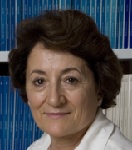
Biography:
Carmen Nájera has studied Chemisty at the University of Saragossa in 1973 and pursued PhD at the University of Oviedo in 1980. She performed Postdoctoral work at the ETH (Zurich), Dyson Perrins Laboratory (Oxford), Harvard University, and Uppsala University. She was Associate Professor at the University of Oviedo in 1985 and Prof. of Organic Chemistry at the University of Alicante in 1993. She is also managing director of MEDALCHEMY a spin-off of the University of Alicante devoted to R&D of APIs and new drugs. She has published more than 300 papers and supervised more than 40 PhD theses.
Abstract:
We have studied in the last 15 years the efficiency of oxime-derived palladacycles as pre-catalysts in carbon-carbon forming reactions such as, Heck, Suzuki, Stille, Hiyama, Ullmann, Sonogashira and Glaser reactions by in situ generation of palladium nanoparticles. Interestingly, they exhibit increasing catalytic activity when water is used as solvent due to the formation of three- and four-palladium atom clusters as has been recently found out by Corma and col. In this talk recent challenge applications of these palladacycles working in aqueous media will be presented. Matsuda-Heck reactions have been performed efficiently in water at rt. In the case of the Suzuki-Miyaura reaction, deactivated aryl chlorides and imidazolylsulfonates can be cross-coupled with boronic acids or potassium trifluoroborates using water as solvent. The copper-free Sonogashira reaction has been also performed with deactivated aryl chlorides and with aryl imidazolylsulfonates under copper-free conditions using water as solvent. The head to head dimerization of terminal alkynes in water allows the steroselective preparation of (E)-1, 4-enynes in the presence of an imidazolinium salt.
Marcelo E Domine
Instituto de TecnologÃa QuÃmica, Spain
Title: SA metrics- Comparative sustainability metrics for biomass and petrochemical succinic acid production and its catalytic valorization into ï§ï€butyrolactone
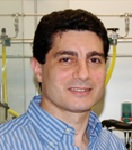
Biography:
Marcelo E Domine completed his PhD at the Polytechnic University of Valencia (Spain) in 2003 under the guidance of Prof. A. Corma, and Postdoctoral studies at the IRCELYON Institute of CNRS (France, 2005-07). In 2008, he re-joined the Institute of Chemical Technology of Valencia (UPV-CSIC, Spain) as Scientific Researcher of CSIC.His current research involves the synthesis and characterization of solid catalysts and their application in sustainable chemical processes; mainly focusing on new biomass-derivatives transformations into valuable chemicals. He is co-author of 35 publications and more than 20 patent applications. He has presented over 10 invited conferences around the world. He currently is Guest Managing Editor of Catalysis Today, also acting as Reviewer in many renowned scientific journals in catalysis and fuels areas.
Abstract:
A wide range of renewable raw materials and compounds can be obtained from lignocellulosic biomass and their derivatives. One of these compounds is biomass-derived Succinic Acid (Bio-SA) which has been described as a strategic platform chemical, due to its potential as the C4 building block in industrial organic chemistry. Sustainability of SA production via fermentative synthesis was studied through two different processes (Myriant and Reverdia cases) and compared with the petrochemical route. Four groups of parameters, namely material efficiency, economics, energy efficiency and land use were considered for this green approach. Metrics calculations show that energy efficiency for Bio-SA production is slightly higher while material efficiency is rather lower when compared with the petrochemical counterpart (Ptr.SA). Remarkably, Bio-SA calculated costs (even in the worse case) are quite lower than the prices for Petr.SA and close to the price of maleic anhydride (MAN) used as raw material. Thus, bio-based SA production appears to be competitive with petrochemical route for MAN, this representing an economic advantage and an opportunity for decreasing of fossil oil dependency. Competitiveness of Bio-SA can be boosted by optimization of fermentative process, as well as by the transformation of Bio-SA into high added value chemicals, such as γ-butyrolactone (GBL). Following this idea, the use of Pd/Al2O3 as a promising and relatively cheap catalyst for the one-pot synthesis of GBL from Bio-SA (or its anhydride) under mild reaction conditions will be presented as affordable alternative for Bio-SA chemical upgrading.
Amit K Dutta
Indian Institute of Engineering Science and Technology, India
Title: Single source precursor approach to green synthesis of metal oxide and sulfide semiconducting nanomaterials for utilization in environmental chemistry and medical diagnostics

Biography:
Amit K Dutta obtained his PhD in Chemistry (2012) at the age of 28 years from Bengal Engineering and Science University, Shibpur, India. He is currently a Research Associate working under Prof. bibhutosh Adhikary, Department of Chemistry, Indian Institute of Engineering Science and Technology, Shibpur (Formerly Bengal Engineering and Science University), India. His current research interest is the preparation of semiconductor nanomaterials and their catalytic applications. He has published 24 papers in reputed journals.
Abstract:
This presentation reports simple, green and efficient synthesis of nano-scaled inorganic semiconducting materials such as metal oxide, sulfide and their utilization in environmental chemistry and medical diagnostics. Semiconducting nanomaterials as catalyst carriers is very promising due to their large surface to volume ratio, high catalyst loading capacity, outstanding stability and environmentally–friendly materials. In recent years, contamination of water by non-biodegradable organic pollutants is a serious and widespread issue. So the development of facile, cheap and green methods for treatment of organic pollutants has been a focal subject in the field of environmental science and technology. Different metal oxides and sulfides such as Fe2O3, Fe3O4, CuO, ZnO, FeS, CdS, ZnS, CuS etc. have been synthesized through simple, cost-effective single source precursor approach and have been found to exhibits visible–light–driven catalytic activity for the degradation of organic pollutants in the waste-water treatment plant. Iron oxide nanoparticles are the most promising owing to the presence of their interesting magnetic properties and were separated at the end of the reaction by their attraction to a magnetic field which is much easier than by cross–flow filtration and centrifugation. Besides, numerous efforts have been paid to develop an organic synthesis process be more simple, green, and efficient using nanomaterial-based visible-light driven photo-catalytic activity. In the field of medical diagnostic, these inorganic nanomaterials are used to construct glucose biosensor for precise monitoring of the human glucose level. Non–enzymatic electrochemical sensor has been fabricated by immobilizing the inorganic nanomaterials on the surface of glassy carbon electrode for detection and estimation of hydrogen peroxide in human urine.

Biography:
Xiaoxin Ye is from the Department of Materials Science and Engineering, Tsinghua University, China. His research fields involve the biomedical titanium alloy processing/ characterization, surface modification, mechanical/corrosion/biocompatibility property. His research is currently about electropulsing-assisted processing and characterization of titanium alloy. Electro pulsing ultrasonic striking and electropulsing-induced topographical oxidation have been also brought in to modify the materials surface for improving the microhardness, corrosion resistance and biocompatibility. His research interests include green materials processing, surface coating, nanomaterials, energy materials and biomaterials.
Abstract:
The effects of electropulsing induced gradient topographic oxide coating of Ti-Al-V alloy matrix strips on the fibroblast adhesion and growth were investigated. The goal in biomaterial surface modification was to possess desired recognition and specificity through modifying its surface condition like topological structure. Here we developed a unique strategy of high-energy electropulsing treatment (EPT) for manipulating surface gradient bio-functionalization of basal textured Ti-6Al-4V alloy strips with the surface gradient topographic oxide coating, which brings in the gradient distribution of surface conditions including matrix alloy, ordinary TiO2 film and TiO2 microwaves on a single strip. High-energy electropulse is frequently used as an electrically-treated method in improving the materials microstructure and mechanical property. This paper reports firstly the surface modification under EPT aiming to improve the biocompatibility, which will meet the demand of biomaterials in different parts of human beings. Novel TiO2 microwaves topological structure on the materials surface resulted in better biocompatibility with more active fibroblast bio-reaction including higher cells viability, better physiological morphology and stronger adhesion binding, which is ascribed to surface chemical components, surface energy and specific surface area under EPT manipulation. The key role of forming TiO2 microwaves structure solely under EPT is the selective effect of the electropulses going through the textured specimen, which thus builds a selective growth of the oxide and forms the microwaves topological structure on the materials surface. The positive contributions of EPT in the thermodynamics and kinetics of oxide coatings growth are attributed to the reduction of nucleation energy barrier and acceleration of atomic diffusion. Thus, the gradient functionalization of biomaterials can be tuned over several seconds EPT in the titanium alloys, opening an energy-saving and high-efficiency door to diverse biomedical applications including the tissue engineering and biological interfaces.
Ahmed Elshazly
Egypt-Japan University of Science and Technology, Egypt
Title: Development of a new electrode using polyaniline coated graphite and its application for wastewater treatment in a batch electrooxidation unit

Biography:
Ahmed Elshazly is from the Department of Chemical and Petrochemicals Engineering, Egypt-Japan University of Science and Technology, Egypt. He participated in researches cover the area of mass and heat transfer, solid- liquid mass transfer in both agitated vessels and pulsated [reciprocated] beds, industrial wastewater treatment especially removal and recovery of heavy metals, and corrosion analysis and control, using new smart coats and its application for corrosion prevention, CO2 capturing using activated fly ash, desalination using humidification dehumidification technique. I have participated in different research teams funded by different institutions such as King Abdulaziz city of science and technology (KACST) Saudi Arabia, Center of Excellence of desalination technology (CEDT) Saudi Arabia, Center of Excellence in Environmental Studies (CEES) Saudi Arabia, Dean of Scientific Research (DSR) king Abdulaziz University.
Abstract:
In this work, a new electrode of polyaniline coated graphite (PANG) was investigated for its possible application in electrooxidation unit for treatment of organic wastes. The main aim of this work is to investigate its stability against Cl- as oxidizing agent in the treatment process. The research work was divided into two main part; first was the polyaniline (PANI) layer deposition on the graphite road using the galvanostatic technique under different conditions of current density, aniline concentration, solution pH and oxalic acid concentration; the second part was to study the stability of the new electrode against Cl- in a solution of NaCl using cyclic voltametry under different conditions of NaCl concentration, scan rate and solution pH. The results indicated that the new electrode has a good stability against Cl- while scanning up 50 cycles
Andreja Zgajnar Gotvajn
University of Ljubljana, Slovenian
Title: Environmental impact assessment and bio-treatability potential of deep eutectic solvent based on holing chloride

Biography:
AndrejaŽgajnarGotvajn obtained her PhD in the field of Chemical Engineering in 1998.She is Assistant Professor of Environmental Engineering and head of the Department of Chemical, Biochemical and Environmental engineering. Her research work is focuses on toxicitystudies in aquatic compartments, risk assessment and hazard identification of chemicals, wastewater treatment: Biological and advanced oxidation processes, etc. She participated in 6 national research projects; she is currently involved in the program Chemical Engineering. She also leads 4 bilateral research projects.In 2011 and 2012 she spent two months as a Visiting Professor and Researcher at Tulane University, School of Public Health & Tropical Medicine New Orleans, USA.
Abstract:
In the recent years, there has been intensive development of non-hazardous solvents and reaction media, able to replace common organic compounds which are possible aquatic contaminants due to their toxicity, volatility and persistency. As a result, Eutectic Solvents (ES) were introduced. However, they could spread widely by wastewaters and affect large areas in terms of acute and chronic toxicity. Because treatment of waste-water is usually based on biological processes the aim of the presented research focuses on the determination of the impact caused by the addition of selected ES to the aerobic WasteWater Treatment Plant (WWTP). Selected ES is based on choline chloride and malonic acid. Biodegradability of is usually determined using various non-standardized laboratory or pilot-scale long-term tests with activated sludge. First, its toxicity to microorganisms of activated sludge was and expanded also to other species, important for evaluation of environmental impact of selected ES. Then its biodegradability in common environmental conditions was determined to assess its pathways in natural environmental compartments. Then the pilot experiment was started with setting up pilot aerobic WWTP, feed by synthetic municipal wastewater and its efficiency was monitored using several parameters. After steady-state operation of WWTP was achieved, the increasing amount of ES was added in the influent and treatment efficiency was monitored continuously for 77 days. It has been confirmed that although the toxicity of ES to microorganisms was quite high, the impact ofthe biological treatment plant at the same concentrations was negligible.
Ewa Bogel-Åukasik
Universidade Nova de Lisboa, Portugal
Title: Alternative Ionic Liquid-based Lignocellulosic Biomass Pre-treatment and Fractionation towards Progress in Biorefinery

Biography:
Ewa Bogel Lukasik has completed her PhD from Warsaw University Technology, Poland. She was a Marie Curie Early Stage Researcher in QUILL, UK and Marie Curie Experience Researcher in iBET, Portugal. She is a Group Leader of Advanced fluids in tailor-made biofuel and bio-based product processing, New University of Lisbon. She is involved in COST Actions: Valorization of lignocellulosic biomass side streams for sustainable production of chemicals, materials and fuels using low environmental impact technologies FP1306, Emergence and Evolution of Complex Chemical Systems CM1304, Utilisation of Biomass for Sustainable Fuels & Chemicals CM0903. She has published 42 papers in reputed journals.
Abstract:
The undiscovered potential of lignocellulosic biomass to obtain a variety of value-added products requires broad research to ensure the feasibility of lignocellulosic biorefineries. One of the major limitations of the biorefinery concept is the lack of an efficient biomass processing tool, which could compromise investment in this sector. Therefore, studies on biomass pretreatment and fractionation were developed to efficiently overcome the recalcitrance of lignocellulose and reduce costs of biorefinery processes. The main objective of current social and global need is to develop a range of innovative alternatives to the valorization of lignocellulosic residues to chemicals, fuels and materials making use of environmentally sound protocols from pretreatment/fractionation to conversion to valuable end products. The ionic liquid, IL, technology on biomass processing is relatively recent and first studies were focused on the lignocellulosic biomass dissolution in different ILs. The dissolution in IL drives to the structural changes in the regenerated biomass by reduction of cellulose crystallinity and lignin content contrasting to the original biomass. These findings provided ILs as tools to perform biomass pre-treatment and the advantageous use of their specific properties over the conventional pre-treatment processes. This presentation focuses on the critical outlook on the study of biomass dissolution and changes occurred in the biomass during this process as well as on the influence of several crucial parameters that govern the dissolution and further pre-treatment process.
Vilas M Ravat
Reliance Industries Limited, India
Title: Shaped carbon nanomaterial supports based heterogeneous catalytic systems for various green routes of chemical synthesis
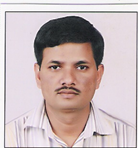
Biography:
Vilas Ravat has completed his PhD from Indian Institute of Technology, Bombay, India. Postdoctoral studies from University of Witwatersrand, Johannesburg, South Africa. He is research scientist at Reliance Technology Group, Mumbai. He has published more than 13 papers in reputed journals. His research interest includes mesoporous, zeolite and carbon based catalysts for green routes of fine chemical synthesis, hydroprocessing and environmental applications.
Abstract:
Carbon materials are excellent supports from an industrial point of view due their wide availability and environmental acceptability. They are stable in both acidic and basic environments and allow facile recovery of the precious metals by burning off the carbon after catalyst deactivation. Recently, shaped carbon nanomaterial (HCSs, CNFs, CSs, CNTs etc) have attracted a lot of attention as supports for metal nanoparticles. The deposition of active metal on shaped carbon nanomaterial affords advantageous substrates because most of the metal nanoparticles are expected to be exposed and accessible to the reactant. However, for selective deposition of metal require heteroatom activation of carbon which increases dispersion and stability of metal particles. Shaped carbon nanomaterials have recently been demonstrated to be promising metal-free alternatives for low-cost catalytic processes. Among the various heterogeneous catalysts, Pd and Pt supported shaped carbon nanomaterial catalysts have attracted much attention due to their availability for various green routes of fine chemical synthesis. However, ACs are still widely chosen as hydrogenation, electrolysis and oxidation catalyst supports due to their ease of preparation and low cost. The challenge remains to improve the cost-effectiveness of shaped carbon nanomaterial to make them an economically acceptable alternative to ACs as supports for chemical reactions.

Biography:
Vinod Kumar was born at Amritsar (Punjab) INDIA on 31st December, 1958. He did his M.Sc. from M.D. University, Rohtak (INDIA) in the year 1979 with specialization in Physical chemistry. He did his PhD from the same university in the year 1983. He joined the Department of chemistry, M.D. University, Rohtak as senior lecturer in 1989 from where he elevated to the post of professor in 2005. At present he is Head of the Department. Prof. Kumar has published 125 Research papers in journals of international repute. He has attended about 40 National/International conferences and supervised 15 PhD students. His major area of research is “Thermodynamics of liquid mixtures”.
Abstract:
Large quantities of liquids or their mixtures are used as solvents for numerous processes in chemical and related industries; thus the challenge of non-harmful solvents, because of new environmental regulations, has promoted great developments of innovative products like ionic liquids to protect the environment. Over the last decades liquids or their mixtures have been characterized on the basis of their thermodynamic properties. Consequently, the need for a deep knowledge of thermodynamic properties of liquid mixtures has appeared driven both by technological and social demands. Now a day, the interest for industrial multi-component processes is increasing and thus, thermodynamic studies of ionic liquid mixtures are being developed in parallel to industrial advances, contributing to design, improvement and output of the processes. In view of this, we report densities and speeds of sound data of 1-ethyl-3-methylimidazolium tetrafluoroborate (1) + water (2) + formamide or N,N- dimethylformamide (3) ternary mixtures over entire composition range at 293.15, 298.15, 303.15, 308.15 K. The heat capacities, Cp of 1-ethyl-3-methylimidazolium tetrafluoroborate, water, formamide and N,N- dimethylformamide have also been measured at 293.15, 298.15, 303.15, 308.15 K using micro differential scanning calorimeter. The measured data have been utilized to determine excess molar volumes and excess isentropic compressibilities values. The topology of the constituent molecules (Graph theory) has been utilized to determine excess molar volumes and excess isentropic compressibilities values. Results obtained indicate that experimental and calculated values are in good agreement.
Gannu Praveen Kumar
Sahasra Institute of Pharmaceutical Sciences, India
Title: Green chemistry as a tool to prevent pharmaceutical hazards and pollution

Biography:
Gannu Praveen Kumar, Professor and Principal in Sahasra Institute of Pharmaceutical Sciences since April 2014, graduated from H.K.E’s society college of Pharmacy, Gulbarga University in 1997, post graduation from BITS, Pilani in 1999 and Ph.D from UCPSC, kakatiya university in 2009. He worked as assistant professor for Vaagdevi college of Pharmacy, from 1999 - 2005, as Associate professor for SR college of Pharmacy from 2008-2010, as Professor and HOD for Talla Padmavathi college of Pharmacy from 2010-2011 and as Professor & HOD for St. Peter’s Institute of Pharmaceutical Sciences from 2011 to 2014. Since 2009, he was appointed as an external examiner for post graduation and has guided 30 M. Pharm students. He has published in both National and International journals and compiled few chapters for text books. He received Gem of India award in the year 1999. He was selected as a best academician of Vaagdevi college of Pharmacy in 2002 and of Talla Padmavathi college of Pharmacy in 2011. He is an advisor for few pharmaceutical companies. He visited foreign countries like London, Dubai, Singapore, Malaysia and Spain as invited speaker.
Abstract:
Green chemistry expresses an area of research developing from scientific discoveries about pollution awareness and it utilizes a set of principles that reduces or eliminates the use or generation of hazardous substances in all steps of particular synthesis or process. Chemists and medicinal scientists can greatly reduce the risk to human health and the environment by following all the valuable principles of green chemistry. The most simple and direct way to apply green chemistry in pharmaceuticals is to utilize eco-friendly, non-hazardous, reproducible and efficient solvents and catalysts in synthesis of drug molecules, drug intermediates and in researches involving synthetic chemistry. Microwave synthesis is also an important tool of green chemistry by being an energy efficient process. Green chemistry has grown from a small idea into a new approach to the scientifically based environmental protection. By using green chemistry procedures, we can minimize the waste of materials, maintain the atom economy and prevent the use of hazardous chemicals. Researchers and pharmaceutical companies need to be encouraged to consider the principles of green chemistry while designing the processes and choosing reagents.
Nguyen Thi Kim Phuong
Vietnam Academy of Science and Technology, Vietnam
Title: Chromate and arsenate removal by layered double hydroxides-polymer beads

Biography:
Ahmed Elshazly is from Institute of Chemical Technology, Vietnam Academy of Science and Technology, Vietnam.
Abstract:
In this study, a novel Mg-Al-Cl and Mg-Fe-Cl beads were developed for removal of hexavalent chromium. The Mg-Al-Cl and Mg-Fe-Cl beads were generated by impregnating synthetic Mg-Fe-Cl and Mg-Al-Cl (with a Mg:Fe, Mg:Al molar ratio 3:1) into alginate/PVA-glutaraldehyde gel bead. The adsorption of chromate and arsenate onto the Mg-Al-Cl and Mg-Fe-Cl beads were investigated by performing both equilibrium and kinetic batch tests. The adsorption kinetics of chromate and arsenate onto Mg-Al-Cl and Mg-Fe-Cl beads were well described by the pseudo second-order kinetic model and adsorption data fitted well to a Langmuir isotherm. Langmuir monolayer capacities were 1.4721 mg Cr/g and1.7737 mg As/g for Mg-Al-Cl beads and 1.3587 mg Cr/g and 1.6439 mg As/g for Mg-Fe-Cl beads. The removal efficiency of chromate by Mg-Al-Cl and Mg-Fe-Cl beads was 92.5% and 90.0% for the initial solution concentrations of 45 mg Cr/L, respectively. The efficiency of arsenate removal was 91.19% for Mg-Al-Cl beads and 79.08 for Mg-Fe-Cl beads at initial concentration of 50 mg As/L. Hence, the Mg-Al-Cl and Mg-Fe-Cl beads developed in this study can be used as promising adsorbents for simultaneous removal of chromate from industrial waste water or groundwater containing these contaminants.
- Young Doctors Research Forum
Location: Hyatt Regency Orlando International Airport
Session Introduction
Katarina Fabicovicova
University of Technology Darmstadt, Germany
Title: Conversion of cellulose and lignocellulosic based feedstock over heterogeneous catalysts into liquid polyols

Biography:
Katarina Fabicovicova is a PhD candidate in the field of technical chemistry, heterogeneous catalysis and reaction engineering on University of Technology Darmstadt in Germany. She is working under supervision of Prof. Peter Claus on the utilization of biomass, especially cellulose into valuable chemicals. She has completed her Master degree in chemical engineering at the University of Technology in Bratislava, Slovakia
Abstract:
Cellulose is the most abundant and non edible biopolymer of the world. Therefore, the utilization of this macromolecule and its integration in a bio-refinery concept is essential even in the near future of growing global shortage of crude oil. Herein we present results of the one-pot hydrogenolysis of cellulose to valuable chemicals, especially polyols, using supported bifunctional catalysts. The hydrogenolysis of cellulose under hydrothermal conditions in the presence of solid catalysts yields ethylene glycol and other valuable polyols such as propylene glycol, butanediol, and sorbitol. Besides our highly active nickel-tungsten catalysts [1], our ongoing research is focused on the development of stable catalyst systems and reaction engineering aspects of biomass conversion to chemicals. Optimization of reaction conditions, recycling tests for catalysts and different cellulose-pretreatment methods such as ball-milling gave a very promising catalyst, namely Ru-W on activated carbon (AC) [2]. Over the Ru-W/AC catalyst, which was ball-milled with cellulose for a very short time (4 minutes), the cellulose conversion of 100 % and overall polyols yield of 84 % within 3 hours reaction time could be achieved (493 K, hydrogen pressure of 65 bar, low catalyst/cellulose ratio (1/10)). The catalyst was also tested for its re-usability in a recycling test which showed a very good stability in six runs. Characterization of catalysts was undertaken for a better understanding of structure and performance of catalyst. Finally, first experiments showed that the optimized conditions can be successfully applied to the hydrogenolysis of real biomass. At very high conversion the product distribution depends on the individual biomass type. With application of a pretreatment method, we can influence the product distribution and increase the overall polyols yield by the hydrogenolysis of raw biomass.
Dominik Gotz
Technical University Darmstadt, Germany
Title: From batch to continuous conversion of bio-derived platform chemicals: Aqueous phase hydrogenolysis of furfuryl alcohol into 1,2-pentanediol using a trickle bed reactor

Biography:
Dominik Götz has completed his MSc in 2013 at the Technical University Darmstadt (Germany). Since 2014 he is working on his PhD in the group of Prof. Dr. Peter Claus. His main fields of research are the conversion of bio-derived platform chemicals especially using trickle bed reactors as well as the modelling of these reactors using CFD tools.
Abstract:
1,2-pentanediol (1,2-PeD) is widely used as a monomer for polyesters, as a key intermediate of low-toxic microbicides and is an ingredient of various cosmetic products. Nowadays, fossil non-renewable resources are the common basis for the production of chemicals and fuels. In this context, 1,2-PeD is currently produced via a cost-intensive multistep route by selective oxidation of pentene to pentene oxide and a subsequent hydrolysis. The displacement of exhaustible raw materials through biomass as a sustainable source of energy and organic carbon is clearly desirable. While the direct selective conversion of biomass into valuable chemicals is still a challenging research topic, various bulk chemicals like furfuryl alcohol (FA) are already available via established production routes. Since FA can be converted into 1,2-PeD by aqueous phase hydrogenolysis, it is representing a promising alternative and sustainable production route for 1,2-PeD. But so far most of the catalysts reported for the hydrogenolysis of FA are lacking of disadvantages either in regard of their toxicity (e.g. copper chromite), the need of additives or special solvents (e.g. adams's catalyst) or industrial applicability. In contrast to the aforementioned, supported ruthenium catalysts are non-toxic as well as stable against water under hydrothermal conditions. In order to assure high throughput and a constant product quality a continuous operation mode is clearly desirable for an industrial application. The trickle bed reactor is representing a promising concept due to its simple and robust build-up while exhibiting a good selectivity for the main products.
Joseph T Grant
The University of Wisconsin, USA
Title: Oxidative Dehydrogenation of Light Alkanes: a Sustainable Way to Platform Olefins?

Biography:
Joseph T Grant obtained his BSE degree in chemical engineering at the University of Michigan-Ann Arbor. He is now a third year PhD student in chemistry under the supervision of Prof. Hermans at the University of Wisconsin-Madison. His research involves heterogeneous catalyst design and characterization for the purpose of natural gas upgrading, currently focused on oxidative propane dehydrogenation as a method for on-purpose propylene production
Abstract:
Shale gas offers unprecedented opportunities for the chemical industry in the United States. It has recently become economically favorable to convert naptha crackers into ethane crackers to produce cheap ethylene. The downside of this is technology switch is a shortage of C3 and C4 olefins, causing a rapid increase in the construction of on-purpose olefin plants to meet the increasing global demand (e.g. around 100 million metric tons per year for propylene only). The state-of-the-art on-purpose dehydrogenation technology of propane-to-propylene is, however, energy intensive and suffers from catalyst deactivation due to coke formation. Oxidative dehydrogenation (ODH) is an attractive alternative with great potential for energy savings, if we were to prevent consecutive combustion of the desired olefins. In my lecture, I will give a brief literature overview and share our recent progress on a disruptive breakthrough. Indeed, by using a very different catalyst than those typically studied for ODH, we were able to increase the selectivity to propylene from 50% at 10% propane conversion to nearly 80% at 20% conversion. These results will be put into the economic context of the reconceptualization of the chemical industry in the framework of green chemistry
Juliana M Velazquez
University of Texas Pan American, USA
Title: A truly green synthesis of α-aminonitriles via Strecker reaction

Biography:
Juliana M. Velazquez is actively pursuing her PhD/MD, having successfully completed her honorable Chemistry degree at the age of 21 years from University of Texas Pan American in an underserved community in the Rio Grande Valley. She was granted several publications in reputed journals, such as the "Organic and Medicinal Chemistry Letters" under the mentorship and guidance of Dr. B.K. Banik, President's endowed professor. Her future postdoctoral studies from Baylor School of Medicine will focus in anticancer β-Lactams. For three consecutive years, she served as president of the Chemistry Honor Society, a premier student research organization with primary role as editorial board member for peer reviews. Juliana was recently granted an prestigious position at the department of Stem Cell Transplantation and Cellular Therapy Center at MD Anderson Cancer Center in Houston Texas and will continue conducting notorious research projects.
Abstract:
The classical Strecker reaction is one of the manageable and most economical methods for the synthesis of racemic α-aminonitriles (precursor of α-amino acids) and pharmacologically useful compounds. Indium powder in water is shown to act as a very efficient catalyst for one-pot, three-component synthesis of α-aminonitriles from diverse amines, aldehydes and TMSCN. This general rapid method is applicable to a wide range of amines and aldehydes and produces products in excellent yield.The present one-pot, three-component environmentally benign procedure for the synthesis of α-aminonitriles will find application in the synthesis of complex biologically active molecules.
Viet Tu Nguyen
Korea University of Science and Technology, Korea
Title: Selective extraction and separation of platinum group metals from chloride media using phosphonium based ionic liquid

Biography:
Viet Tu Nguyen is currently a PhD candidate majored in Resources Recycling at the Korea University of Science and Technology (UST). His research deals with metals separation and purification from primary and secondary resources using novel solvent extraction based ionic liquids.
Abstract:
The present research focused on the use of phosphonium-based ionic liquid to improve the existing solvent extraction process from the environmental benign point of view for the extraction and separation of platinum group metals (PGMs). The studies carried out with [P66614+]Cl–[Cyphos IL 101] diluted in xylene showed the selective extraction of both Pd(II) and Pt(IV) from the solution containing 55 mg/L Pd(II) and 100 mg/L Pt(IV) in 0.1 mol/L HCl by anion exchange mechanism leaving Rh(III) in the raffinate. McCabe-Thiele diagram revealed the quantitative extraction of Pd(II) and Pt(IV) with 0.6 g/L Cyphos IL 101 within two counter-current stages at O/A of 3/2 at 298 K. The species formed in the organic phase at different acidities of the aqueous phases were also determined with Job’s method and elucidated by proton NMR and FTIR spectra. The negative standard enthalpy estimated by Vant’ Hoff equation demonstrated the exothermic nature of extraction for both metals. The Pt(IV) and Pd(II) from the loaded organic was selectively stripped with NaSCN and acidic thiourea solutions respectively. Particularly, two counter-current stages are needed for quantitative stripping of Pt(IV) with 0.1 mol/L NaSCNat O/A of 2; whereas total stripping of Pd(II) with 0.01 mol/L acidic thiourea requires only one stage at O/A of 1. In addition, a series of extraction-stripping up to 5 cycles showed a possible recirculation of used solvent without loss of performance. Simulations of the counter-current modes also revealed the possibility of using phosphonium based ionic liquid for the selective separation and recovery of PGMs from acidic chloride solutions in continuous mode.
- Track 1: Basic Principles and New Trends in Green Chemistry
Track 3: Green Synthesis-Designing the Starting Materials
Track 4: Green Catalysis
Track 6: Green Metrics and Measurements
Location: Hyatt Regency Orlando International Airport
Session Introduction
John Littleton
University of Kentucky, USA
Title: Green pharmaceutical chemistry: target-directed evolution of plant secondary metabolism

Biography:
John Littleton studied Pharmacology and Medicine as an MD PhD student at Kings College, London University in England. He continued academic research at Kings College, mostly in CNS target validation, as a Professor in the Pharmacology Department until 1993. At this time he spent a year at the University of Kentucky on a Wellcome Foundation fellowship where he started to develop an interest in novel technologies for plant drug discovery. He returned to Kentucky in 1995 to further develop the plant drug discovery aspect of his research, using novel methods of mutagenesis and high throughput screening in plant cell cultures. He co-founded the biotechnology company, NaprogenixInc, in 2002 to commercialize these methods. With support from NIH (SBIR/STTR awards) and Kentucky (matching funds for these) Naprogenix and the University of Kentucky have refined the technology to its current state. The technology now utilizes the expression of protein targets in plant cells, followed by mutagenesis and selection for clones generating metabolites which interact with the target.
Abstract:
Plants have evolved bioactive metabolites of great complexity and potency, however the compounds found in the wild-type plant representonly a fraction of the genomic capability of the species, If we could only “tell” plants what bioactivity we required from them, this would open a new chapter in plant drug discovery. Naprogenix’ novel technology achieves this by “evolving” plant biosynthesis,via mutation and selection,toward metabolites targeted on specific proteins. This can increase yields of known compounds, or generate active metabolites which are not detectable in the wild-type plant. Proof of concept has used several plant species and several targets, but this example describes the production of inhibitors of the human dopamine transporter (DAT- amolecular target in Parkinson’s disease) in cell cultures of a native Lobelia species. This plant contains small amounts of lobinaline, a previously uninvestigated inhibitor of the DAT, which would be a conventional lead compound except that it is a complex binitrogenous alkaloid with 5 chiral centers and no known chemical synthesis. However, this complexity makes it an excellent example of the value of target-directed biosynthesis. First, we expressed the human DAT target protein in cells of this species, making them susceptible to a cytotoxin which is accumulated intracellularly by the DAT. Mutants which are overproducing inhibitors of the DAT now have a survival advantage when exposed to the toxin. About 1/300 gain-of-function mutants survived selection, providing 120 toxin-resistant individual clones. Extracts from 41 of these showed greatly increased levels of DAT inhibition, and 16 of these were overproducing lobinaline. However, the other 25 clones were overproducing other metabolites, 8 of which were not detectable in the wild-type plant. Several of these showed chemical similarity to lobinaline and putatively represent a biosynthetic active compound library. In this way it is possible to tell a plant species to synthesize metabolites with a specific bioactivity and, by selection, the plant cell also does the initial pharmacological screening. Mankind can become the orchestrator of plant biosynthetic evolution rather than its passive beneficiary.
Marion H Emmert
Worcester Polytechnic Institute, USA
Title: Transition Metal Catalysis for Non-Directed C-H Functionalization

Biography:
Marion HEmmertreceived her PhD from the University of Munster (Germany) working with Professor Gerhard Erker on model polymerization catalysts.Following Postdoctoral work at the University of Michigan with Professor Melanie Sanford, she joined the faculty at WPI in 2011 as Assistant Professor of Chemistry, with joint appointments in Materials and Chemical Engineering since 2012. Her research interest focuses on the development of new, sustainable processes; current projects includeC-H functionalizations, aerobic oxidations at low oxygen concentrations,and recycling processes for rare earth materials.
Abstract:
Catalysis is one of the most powerful tools of green chemistry, enabling reactions with lower energy consumption and providing new pathways for bond formation. Catalytic C-H functionalizations, in particular, are powerful methodologies for installing functional groups in previously non-functionalized positions of a molecule and the use of catalyst directing groups has enabled a wide variety of exciting bond formations with remarkable selectivities and broad applicability.One of the greatest current challenges in this research area is how to catalyze analogous C-H functionalization reactivity without the presence of catalyst directing groups. Such transformations often suffer from the lack of a strong catalyst pre-coordination, which can lead to lower reactivities.The research described in this presentation will showcase basic principles of catalyst and methodology design to achieve non-directed C-H functionalizations and provide insights into reactivity and selectivity-determining factors for the C-H aminations of arenes and the alpha-C H oxidation of tertiary amines.

Biography:
Joseph Fortunak obtained his PhD in synthetic organic chemistry with Professor Barry M. Trost at the University of Wisconsin-Madison. After postdoctoral work with Professor Ian Fleming at Cambridge University, Joseph joined the Process Development group at SmithKline Beecham (now GlaxoSmithKline) in 1983. Joseph also worked at Dupont Pharmaceuticals and was the Head of Global Chemical Development at Abbott Labs. Joseph is now a Professor of Chemistry and Pharmaceutical Sciences at Howard University in Washington, DC. Joseph teaches postgraduate courses and is helping develop independent BSc and MS programs in drug development and regulation at the Kilimanjaro School of Pharmacy in Tanzania and the University of Ibadan in Nigeria. These African-owned and African-managed initiatives are unique for Sub-Saharan Africa. Joseph collaborates with a number of international groups including the World Health Organization, UNITAID, UNIDO, UN ANDI, the Clinton Health Access Initiative and the Department of Trade and Industry in South Africa. New Chemistry that his group has initiated at Howard University has contributed to lowering the cost of HIV/AIDS medicines for 14 million people in LMICs.
Abstract:
Originator pharmaceutical companies employ excellent scientists in development and manufacturing. The “just-in-time” approach to pharmaceutical development expenditures and the emergence of new chemistry and technologies, however, means that opportunities exist to improve commercial manufacturing processes for Active Pharmaceutical Ingredients (APIs) and finished dosage forms. In 2005 the “United Nations Millenium Development Goals: Progress Report” estimated that the richest 15% of the world’s population consumes 91% of medicines. This situation is only modestly improved in the past decade. Most products on the World Health Organization’s “Essential Medicines List” are theoretically available to low- and middle-income countries (LMICs) through generic production, multiple forms of licensing, or favorable access pricing. Generic production of critical medicines for HIV/AIDS, Malaria, and Hepatitis C has greatly reduced prices – in many cases to less than 1% of high-income country pricing. Academic research has the ability to focus on optimizing the chemistry for producing critical medicines “to the nth degree” whereas even generic manufacturers cannot focus on the absolutely lowest cost of producing essential medicines. We use green chemistry and flow processing to reduce the cost of manufacturing critical APIs for HIV/AIDS (the HIV Protease Inhibitors darunavir and atazanavir), Hepatitis, and Malaria (amodiaquine, piperaquine, and lumefantrine), with a focus on green chemistry and on continuous processing. This includes an organocatalytic approach to simultaneously setting two contiguous chiral centers in darunavir and atazanavir with complete control of stereochemistry.
David Morales-Morales
Instituto de Quimica, Mexico
Title: Suzuki-Miyaura Cross coupling reactions in water. New hydrophilic ligand scaffolds from Pincer compounds to cocoa beans.
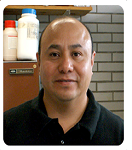
Biography:
David Morales-Morales did his PhD at the University of Essex, UK and Postdoctoral studies at the University of Hawaii at Manoa. He is Professor of Chemistry at Instituto de Química-UNAM in Mexico. His research covers organometallic and coordination chemistry with platinum group metals. He has published some 150 papers, reviews and chapters in books. He was the Editor of the book “The Chemistry of the Pincer Compounds” (Elsevier). He has presented over 60 plenary and invited conferences around the world and is a part of the international editorial and advisory boards of the journals ARKIVOC and ChemCatChem (Wiley-VCH-Germany) and of the Homogeneous Catalysis Symposia (ISHC).
Abstract:
Catalysis is at the core of green chemistry, constituting one of the principles of this doctrine and representing one of its fundamental pillars. Among the most celebrated catalyzed chemical transformations are the cross coupling reactions and one that has had a tremendous development in the last decade is the Suzuki-Miyaura reaction. Being considered nowadays a fundamental power tool in organic synthesis. Recent advances in this area deal with the use of this process in water, using alternative energy sources, employing highly reactive and selective catalyst, preferable soluble in water. Thus, in this work we will present recent developments on the design and synthesis of novel hydrophilic ligand scaffolds including pincer ligands, secondary amines having hydrophilic substituents and naturally occurring compounds such as theophylline and other xanthine derivatives. The results on the use of these ligands in cross coupling reactions in water or aqueous media will be discussed.
Basudeb Saha
Spero Energy, Inc.
USA
Title: Functionalized Catalysts for the Production of High Value Chemicals and High Octane Fuels from Lignocellulose

Biography:
BasudebSaha holds BS and MS degrees in Chemistry from Calcutta University and a PhD from the Indian Association for the Cultivation of Science. He did Postdoctoral research with Professor James Espenson at Iowa State University, and then moved to the polyurethane business R&D division of Dow Chemical Company where he led several breakthrough and implementation research projects. Prior to joining Purdue University in 2013, he served on the faculty at the University of Delhi. His research interests include technology development for renewable chemicals and fuels from sustainable biomass, and the synthesis of mesoporous catalysts with desired functionalities. He is also the Chief Technology Officer of Spero Energy, Inc.He published 60 research articles and holds three patents.
Abstract:
Synthesis of functionalized solid catalysts for the manufacture of platform chemicals and fuel candidates from naturally abundant lignocellulosic biomass has received significant attentions in recent years. We have designed and developed several heterogeneous mesoporous materials for dehydration and hydrodeoxygenation reactions. These materials having Brønsted and Lewis acid sites are effective for upgrading thecarbohydrate fractions of lignocelluloses into high selective 5-hydroxylmethylfurrural (HMF) and furfural (Ff). These top-ten platform chemicals are precursors for several high value chemicals (HVCs) and advanced fuels that are currently obtained from petroleum feedstock. This presentation will emphasize the recent approach on the synthesisof such materials and their catalytic applications for the production of furfurals and further upgradingfurfuralsinto high octane fuels.
Robert R Freeman
Frontier Laboratories Ltd., Japan
Title: Rapid catalyst screening using a high pressure, Tandem micro-Reactor GC/MS

Biography:
Freeman has worked in gas-phase columns and instrumentation for over 25 years. In 1975, he designed and built the first gas chromatographic system that could be used to analyze THC in blood and urine. After careers at Varian, Hewlett Packard and J&W Scientific, Dr. Freeman founded Air Toxics Ltd. which has become the world’s largest ‘air’ environmental laboratory. Currently, Dr. Freeman works with the R/D group at Frontier Laboratories. Dr. Freeman has authored two books, several chapters and more the 50 articles on various aspects of separation sciences.
Abstract:
The possibility of converting various biomass feed stocks directly to biofuels or value-added specialty chemicals using catalytic pyrolysis has precipitated a demand for a fast, reliable method to characterize newly developed catalysts. Catalytic pyrolysis is a three-step process: (1) the feedstock is first pyrolyzed (often referred to as “fast pyrolysis”), (2) the pyrolyzates flow through a catalyst bed and (3) the ‘products’ are identified and quantitated. The Tandem Micro-Reactor GC/MS system integrates these three processes into a single instrument. Studies indicate that by the end of the year bioethanol production will exceed the needs of E10 fuels, resulting in an oversupply of ethanol. Consequently, bioethanol appears to be the platform molecule for the production of value-added chemicals in the next decade. Thus, the catalytic conversion of ethanol appears to be an ideal process to use as a benchmark for illustrating the benefits of using the tandem micro-Reactor; ethanol is stable, and the ethylene selectivity is high using readily available zeolite catalysts. This work describes the findings of an evaluation of the Tandem Micro-Reactor GC/MS system based on the conversion of ethanol. The results of the following tests will be reported: 1. Monitor hydrocarbons formed as the temperature of the catalysis is heated at a fixed rate. 2. Monitor hydrocarbons formed at selected catalyst temperatures. 3. Determine the amount of sample converted to char using EGA-MS. 4. Monitor the surface activity of the catalyst using ethylene as a test probe.

Biography:
Amy S Cannon holds the world's first PhD in Green Chemistry from the University of Massachusetts Boston. She is the co-founder and Executive Director of Beyond Benign, a non-profit organization dedicated to green chemistry education. She worked as an Assistant Professor and Director of Outreach and Community Education at the Center for Green Chemistry at UMass Lowell until 2007 when she started Beyond Benign. She has industrial experience as an analytical chemist for the Gillette Company and as a scientist for Rohm and Haas. Through Beyond Benign, she leads many initiatives aimed at transforming chemistry education in K-12 and higher education.
Abstract:
Green chemistry by definition involves the intentional design of safer products and processes that reduce or eliminate hazardous substances. In order to ensure the adoption of green chemistry practices on industrial scales, green chemistry must be wholly adopted into educational systems and research initiatives. Molecular designers, chemists and engineers must all come to the research bench or factory setting with the knowledge and tools that will enable the reduction of hazard within the processes or products they design. This presentation will discuss hazard reduction as a design criterion and novel approaches for teaching the design of safer, greener technologies in higher education. This presentation will also highlight the Green Chemistry Commitment program, an initiative lead by Beyond Benign, a non-profit organization dedicated to green chemistry education. The Green Chemistry Commitment aims to transform chemistry education in higher education to enable students to enter industrial positions with the skills and knowledge to design safer, more sustainable products and processes.
Salah S Massoud
University of Louisiana at Lafayette, USA
Title: Recent Developments of the Fixation of atmospheric CO2 by Transition Metals and Lanthanide Complexes
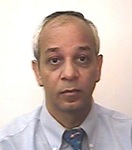
Biography:
Salah S Massoud received his PhD from Boston University and has Postdoctoral studies at Basel University (Switzerland), University of Alberta (Canada) and visiting Professor at Ohio and Houston Universities. He has published more than 135 papers in reputed and peer-reviewed journals and has been serving as an Editorial Board Member of Magnetochemistry Journal, Journals of Advances in Chemistry and Modern Chemistry and Applications (JMCA) and Dataset Papers in Materials Science.
Abstract:
The chemical fixation and activation of CO2 by metal complexes may lead to certain devices that can eliminate the CO2 present in the air and hence controlling its concentration and reducing the environmental problems due to the greenhouse effect and global warming. This can be achieved by designing “inexpensive inorganic compounds” that rapidly and effectively catalyze the atmospheric CO2 fixation. In slightly basic solutions, the atmospheric fixation of CO2 by metal complexes, through hydroxo-species, afford the carbonato metal complexes. A number of simple N-donor ligands and multi-dentate Schiff bases containing two or three N-atoms, phenolic and alkoxy groups are to used synthesize a series of 3d(M(II) = Ni, Cu, Zn) and 4f(Ln(III) = lanthanides) complexes. The incorporation of lanthanide (III) ion into the skeleton of3d complexes to produce 3d-4f heteronuclear metal complexes should increase the affinity of the compounds for CO2 fixation into the Ln (III) pocket (Ln3+ ion is a hard Lewis acid which strongly bound to hard Lewis bases; O-donor species such as CO32- ion). The carbonato complexes are not only interesting from the structural and geometrical points of view, but alsomay result in the discovery of interesting Single Molecular Magnets (SMM’s) which can be used to increase the memory of the computers. The resulting carbonato-bridged compounds can also be used to prepare some useful organic compounds. Recent developments concerning synthesis and structure characterization of different coordination carbonato-bridged compounds, magnetic properties and their potential applications will be addressed.
Dequan Xiao
University of New Haven, USA
Title: Exploring the Mildest Thermodynamic Conditions for the Inverse Design of Hydrogenation Catalysts
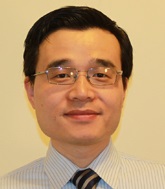
Biography:
Dequan Xiao received a PhD degree in chemistry from Duke University. From 2009 to 2013, he worked as a postdoctoral associate at Yale University. Since 2013, He becomes an assistant professor at the University of New Haven. His research interests focus on developing theoretical and computational chemistry methods to study materials properties and to perform inverse molecular design, for the applications in renewable energy science, soft matters, biophysics, and green chemistry. He has published 25 peer-reviewed articles, obtained 4 patents, and written two review articles on “inverse molecular design” and “green catalysts for biomass conversion”, respectively.
Abstract:
Designing green catalysts is the key for the development of next-generation technologies to convert biomass molecules into liquid fuels or other value-added chemicals. Recently, a few hydrogenation catalysts have been developed to effectively drive biomass conversions. However, designing hydrogenation catalysts that can work under mild conditions such as low pressure, low temperature, and green solvent remains a challenge. To provide the insights for designing greener hydrogenation catalysts, we explored the thermodynamics conditions (e.g., temperature, pressure, and solvents) for various hydrogenation or hydrogenolysis reaction based on biomass model compounds, by combining the ab initio quantum chemistry calculations and experimental explorations. Our results show that thermodynamically it is indeed possible to design greener catalysts (e.g., robust and economic catalysts that work under mild conditions) for converting biomass molecules into value-added chemicals. In addition, we showed that optimal hydrogenation catalysts could be sought under the guidance of inverse design methods.
Emily C Mundorff
Hofstra University, USA
Title: Alteration of the substrate specificity of alanine dehydrogenase

Biography:
Emily CMundorff completed her PhD in year 2000 from UC Berkeley.She worked at Maxygen and Codexis as a Bioinformatic Scientist until 2010.While at Codexis she received three Presidential Green Chemistry Challenge awards for her work in support of the directed evolution of enzymes to be used as biocatalysts in pharmaceutical manufacturing processes.She then moved to academia as an HHMI Interdisciplinary Science Fellow at Vassar College from 2011-2012 and is now an Asst. Professor of Chemistry at Hofstra University.She is an inventor on more than 35 patents and has coauthored 14 papers.Her lab is interested in the evolution of new substrate specificities in enzymes.
Abstract:
What determines the evolvability of an enzyme?Is an enzyme’s apparent natural history a good guide to determine the ease of evolving new substrate specificities? The L-alanine dehydrogenase (AlaDH) has a natural history that suggests it would not be a promising candidate for expansion of substrate specificity by protein engineering: It is the only amino acid dehydrogenase in its fold family, it has no sequence or structural similarity to any known amino acid dehydrogenase, and it has a strong preference for L-alanine over all other substrates. By contrast, engineering of the Amino Acid Dehydrogenase superfamily members has produced catalysts with expanded substrate specificity; yet, this enzyme family already contains members that accept a broad range of substrates. To test whether the natural history of an enzyme is a predictor of its innate evolvability, directed evolution was carried out on AlaDH. A single mutationintroduced intothe AlaDH from Mycobacterium tuberculosis(MtAlaDH) completely alters its substrate specificity pattern enabling activity towards a range of larger amino acids.Saturation mutagenesis libraries in this mutant background additionally identified a double mutant with improved activity toward hydrophobic amino acids. The catalytic efficiencies achieved in AlaDH are comparable with those that resulted from similar efforts in the Amino Acid Dehydrogenase superfamily and demonstrate the evolvability of MtAlaDH specificity toward other amino acid substrates.
Sandra Luber
University of Zurich, Switzerland
Title: Efficient cubane catalysts for artificial water-splitting

Biography:
Sandra Luber received her MSc and PhD degree from ETH Zurich in 2007 and 2009, respectively. After postdoctoral studies at Biozentrum of the University of Basel (2010) and Yale University (2010-2011), she joined BASF SE in 2012. Currently, she works on her postdoctoral lecturing qualification (Habilitation thesis) at the University of Zurich. Awards include the ETH medal for an outstanding PhD thesis as well as the IBM Research Prize for Computer Modelling and Simulations in Chemistry, Biology, and Materials Science.
Abstract:
Solar energy is an inexhaustible energy source for a long-term solution to the global energy consumption. The storage of large amounts of light energy can be achieved by conversion into chemical energy saved in biomass. Artificial photosynthesis permits the splitting of water into dihydrogen and dioxygen and is therefore a sustainable strategy to meet the increasing worldwide need for clean energy. This requires the development of high-performance waterreduction and water-oxidation catalysts (WOCs) that can be combined to an overall artificial photocatalytic water-splitting system. Very recently, the first Co(II)-based cubane WOCs have been presented. These WOCs excel through hitherto unprecedented structural analogies to the oxygen-evolving complex of nature’s photosystem II. We study their structure and activity by means of density functional theory (DFT) in combination with innovative DFT-based molecular dynamics. I will give an overview about our recent results for the design of efficient cubane-type catalysts.
Arik Kar
University of Cambridge, UK
Title: SnO2-PbS nanocomposites and hetero structures: Fabrication, structures and applications

Biography:
Arik Kar obtained his BSc (Hons) in Chemistry from Serampore College, University of Calcutta, in 2005. In 2007, he obtained his MSc degree in Chemistry from the University of Calcutta with a specialization in Inorganic Chemistry. He then completed his PhD in Materials Science from Jadavpur University in 2013. He was awarded a Newton International Fellowship from the Royal Society for the academic years 2014–2016. He is now continuing his research as a Newton International Fellow at the University of Cambridge. He has published 23 papers in reputed journals and has presented his research at 9 international conferences so far.
Abstract:
SnO2 is a significant metal-oxide, n-type wide band gap (3.6 eV at 300K) semiconductor. Due to its outstanding electrical, optical and electrochemical properties, SnO2 offers a broad range of applications in solar cells, catalytic support materials, transparent electrodes and solid state chemical sensors. However, in terms of several of these applications, pure SnO2 nanocrystals show a few classical drawbacks, mainly due to their large surface-to-volume ratio. Two standard strategies to advance the application-based performance of SnO2 are its mixing and coating with another semiconductor material. Nowadays, nanocomposite and heterostructure materials comprised of two semiconductors of different band gap are proving of immense interest to researchers due to their superior electrical, optical, and electrochemical properties. In my presentation, I will discuss the fabrication, structures and application-based properties of SnO2-PbS nanocomposite and heterostructure materials. First I will describe some innovative solution and microwave synthetic techniques for the preparation of pure SnO2 nanoparticles/nanospheres, pure PbS nanocubes, SnO2-PbS nanocomposites and heterostructures. The structures are confirmed by X-ray diffraction (XRD)/Reitveld study, Raman spectroscopy and transmission electron microscopy (TEM) analysis. Elemental mapping and line scan EDX analysis successfully demonstrate the effective PbS deposition on SnO2 nanospheres as well as the mixing of SnO2 and PbS to form nanocomposites. I will present a model to explain different relaxation processes in SnO2-PbS nanocomposite and heterostructure which helps to understand how the two semiconductors interact. Lastly, I will discuss some application-based properties of as-synthesized nanocomposite and heterostructure materials which are found to be significantly improved relative to pure SnO2 or PbS.
Angelo Albini
University of Pavia, Italy
Title: The contribution of photochemistry and photocatalysis to Green Chemistry
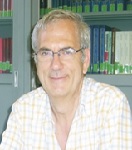
Biography:
Angelo Albini studied chemistry at the University of Pavia, and after Postdoctoral studies in Germany, Canada and Denmark and a period as Professor in Torino University, he returned to Pavia. His research always centered on photochemistry and green chemistry. He published more than 400 papers in reputed journals and is serving as an Editorial Board Member of reputed journals.
Abstract:
In his pioneering work at the beginning of the 20th Century, Giacomo Ciamician pointed to the contrast between the harsh conditions under which chemicals were synthesized in the lab and the mild conditions under which the same compounds were synthesized by green plants, with no show of “brute force”. What made the difference was of course solar light and Ciamician devoted 25 years of research to the study of reactions caused by exposing to the sun a variety of compounds. Thus, he can be considered the Father of Green Chemistry and Photochemistry at the same time. A century afterwards a variety of photochemical and photocatalytic methods (including solar and visible light) are available to practitioners of synthesis. The actual “green” character of such reactions is discussed in a number of significant cases, highlighting underrated opportunities and possibly encountered pitfalls. The role of photochemical approach in the future development of chemical industry is briefly outlined.

Biography:
Xumu Zhang was born in 1961 in Hubei Province, China. He received his BS degree in chemistry (1982) from Wuhan University, China, and MS in chemistry (1985) from the Chinese Science Academy, Fuzhou, China, under the supervision of Professor Jiaxi Lu. He received his PhD in chemistry in 1992 from Stanford University under the guidance of James P Collman. He then carried out Postdoctoral work at Stanford for two years. In 1994, he joined the department of chemistry at The Penn State University as an Assistant Professor of chemistry. In 1999, he was promoted to an Associate Professor of chemistry. In 2003, he was promoted to Professor of chemistry. In 2007, he moved to The State University of New Jersey as Distinguished Professor. His research interests include the development of new chiralligands for asymmetric catalysis, the investigation of asymmetric hydrogenation and carbon−carbon bond-forming reactions, the synthesis of biologically active compounds, and the discovery of new synthetic methods.
Abstract:
William Knowles, in his 2001 Nobel Lecture, described his 1960s and 70s work in developing asymmetric hydrogenation catalysts. Now, almost 40 years later, although major advances have been made (e.g. Professor Noyori’s Nobel prize winning work in asymmetric hydrogenation), significant challenges still remain. On the one hand, this presentation describes innovation in asymmetric hydrogenation catalysis from both an academic and industrial perspective. It highlights recent advances and the commercialization processes regarding asymmetric hydrogenation. The broad array of asymmetric hydrogenation catalysts and their numerous applications for a variety of functional group hydrogenations will be reviewed. We will emphasis on the practical applications of asymmetric hydrogenation to make chiral pharmaceuticals and address unmet needs in asymmetric hydrogenation. The knowledge gained in this research can lead to “next generation” catalysts.
Ana Rosa Silva
Aveiro University, Portugal
Title: Asymmetric heterogeneous catalysts based on copper(II) complexes with bis(oxazoline) ligands
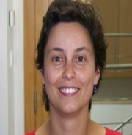
Biography:
Ana Rosa Silva has completed her PhD in Chemistry in 2003 from Porto University and Postdoctoral studies from Porto and York University. She has been an Assistant Researcher at Porto University (PT), Marie-Curie Transfer of Knowledge Postdoctoral fellow at Unilever (UK) and Assistant Researcher at Aveiro University (PT). Now, she is Principal Researcher at Aveiro University. She has published more than 56 papers in international refereed journals. She has been working in the area of asymmetric heterogeneous catalysis, green chemistry, and homogeneous/heterogeneous liquid phase oxidation catalysis.
Abstract:
Catalysis is a source of atom economic and low costtechnologies. It is therefore one of the pillars of green chemistry. Asymmetric catalysis is unique in the sense that a minute quantity of chiral catalyst is sufficient to generate large amounts of enantiopure compounds. Bis (oxazoline)ligands are one of the very versatile chiral ligands systems used in asymmetric catalysis.A large number of organic transformations have been enantio selectively catalyzed by their transition metal complexes. Among other asymmetric organic transformations, the copper (II) complexes are very efficient in the cyclopropanation and aziridination of alkenes and in the kinetic resolution of 1, 2-diols. These ligands are commercially available, but are expensive. Therefore there has been an intense research effort to make them recyclable and reusable, thus economical. The most used strategy has been the covalent immobilization onto several supports with varying degree of success depending on the type of porous support and immobilization methodology. In this presentation the importance of the support properties in the stability and performance of immobilized copper (II) bis (oxazoline) complexes in asymmetric catalysis will be shown.
Frank Wiesbrock
Polymer Competence Center Leoben, Austria
Title: Green chemistry in niche applications: Development of “green†photoresists

Biography:
Frank Wiesbrock completed his PhD thesis from the Munich University of Technology. After Postdoctoral stays at the Eindhoven University of Technology and the National Hellenic Research Foundation, he completed his habilitation in Macromolecular Chemistry at the Graz University of Technology in 2012. He has joined the Polymer Competence Center Leoben in 2012. He is the manager of the Poly Comp - Functional Polymer Composites - project. He has published more than 60 papers and is Editor-in-Chief of the American Journal of Macromolecular Science and the Editorial Board Member of Polymers and Current Microwave Chemistry.
Abstract:
The idea that the synthesis and application of chemicals should more significantly be determined by environmental aspects has met international agreement. Nonetheless, “green” alterations so far have often been met by niche products. On the example of photoresists, possible strategies for a more environmental benign synthesis and formulation as well as their application considering health concerns will be presented. Due to their ability to reproduce 2.5- and 3-dimensional patterns, polymer-based photoresists have been applied for wafer production, lab-on-a-chip manufacturing, and surface finishing. So-called negative photoresists are cross-linked upon irradiation with UV light; non-cross-linked areas remain soluble and can be removed from the resist by simple dissolution. After the development of a water-soluble photoresist, eliminating volatile organic solvents from that process step (WO 2013/036979) we have recently complemented our toolbox by a photoresist derived from renewable resources. The 2-oxazoline monomers utilized for the synthesis of the copolymer to be cross-linked were synthesized from the reaction of undecenoic acid (castor oil) and decanoic acid (coconut oil), respectively, with ethanol amine. The copolymerization itself was performed at 300 g-scale in a remarkably energy-efficient process, namely under microwave irradiation in ionic liquids, which are prime absorbers of microwave irradiation. Upon cooling after the polymerization, the copolymer precipitated, enabling for the recovery of the product and the ionic liquid. Notably, the ionic liquid could be used as reaction medium in subsequent polymerizations. Cross-linking reactions of the copolymer were realized by thiol-ene reactions of the copolymer and a tetrathiol. Resolutions of 1 ïm were achieved.
Abdulrahman Al-Warthan
King Saud University, Saudi Arabia
Title: Pulicaria glutinosa plant extract: a green and ecofriendly reducing agent for the preparation of highly reduced graphene oxide

Biography:
Abdulrahman Al-Warthan obtained his PhD from the School of Chemistry at University of Hull, UK in 1988. He served as a Chairman for Chemistry department in King Saud University during 2004-2006 and as a Chairman for Saudi Chemical Society during 1997-2001. He is a member of the college of Forensic Sciences Council at Naif Arab University for Security Sciences. He is the Editor-in-Chief for the Arabian Journal of Chemistry.
Abstract:
The environmentally friendly synthesis of nanomaterials using green chemistry has attracted tremendous attention in recent years due to its easy handling, low cost, and biocompatibility. Here we demonstrate a facile and efficient route for the synthesis of highly reduced graphene oxide (PE-HRG) by the green reduction of graphene oxide (GRO) using the Pulicaria glutinosa plant extract (PE). The phytomolecules present in the P. glutinosa extract are not only responsible for the reduction of GRO, but also for the functionalization of the surface of the PE-HRG nanosheets and stabilize them in various solvents, thereby limiting the use of any other external and harmful chemical reductants and surfactants. The effect of PE on the dispersibility of PE-HRG in various solvents was investigated by preparing PE-HRG with different amounts of PE, and the dispersibility of PE-HRG was compared with that of chemically reduced graphene oxide (CRG). The reduction of GRO was confirmed by ultraviolet-visible (UV-vis), Fourier-transform infrared (FT-IR), Raman and X-ray photoelectron (XPS) spectroscopies, thermogravimetric analysis (TGA), X-ray powder diffraction (XRD) and transmission electron microscopy (TEM).
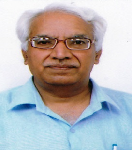
Biography:
J. P. Yadav has completed his PhD in the year 1991 from M. D. University, Rohtak, Haryana, India. He has been awarded Prof. R.P. Roy Young Scientist Award by Society of Cytology and Genetics, India. He served as Head, Department of Genetics, M. D. University, Rohtak from 04/01/2010 to 03/01/2013. He has published more than 130 research papers and book chapters in reputed journals. He has submitted 180 gene sequences to NCBI and accession numbers have been already allotted to these sequences. He has published 4 books and 15 students have already completed Ph.D. under his guidance He has been attended and presented papers in more than 50 conferences. He has visited South Africa and Ireland. He has chaired sessions at National and International conferences. He is reviewers of more than 40 journals. Presently, he is Coordinator of DST-FIST, UGC-Innovative and UGC SAP Programme. He has been working in the area of medicinal plants diversity, antimicrobial activity, endophytes as natural products and green synthesis of nanoparticles
Abstract:
Nanobiotechnology is presently one of the most dynamic and important disciplines of research in contemporary material science whereby plants and different plant products are finding an imperative use in the synthesis of nanoparticles (NPs). In recent years, researchers have drawn their attention towards ecofriendly synthesis of nanoparticles and their activity against different kinds of microbes. In recent study, silver nanoparticles were successfully synthesized from aqueous extract of Phyllanthus amarus, an important medicinal plant in ayurveda. Silver nanoparticles were characterized by UV-Vis spectroscopy, transmission electron microscopy; energy dispersive X-ray spectroscopy, dynamic light scattering, zeta potential, X- ray diffraction and fourier transform infra-red spectroscopy. The average size of synthesized nanoparticles was 15.7, 24±8 and 29.78nm by XRD, TEM and DLS respectively. The antibacterial activity of silver nanoparticles was investigated against nine reference bacterial ATCC strains and ten multidrug resistant strains of Pseudomonas aeruginosa isolated from burn patients. The zone of inhibition was measured in the range of 10± 0.58mm to 17±0.11mm against reference strains and 10±0.53 to 21±0.11mm against MDR burn isolates with silver nanoparticles concentration of 12.5 to 100μg/ml. The zone of inhibition increased with increase in the concentration of silver nanoparticles. The minimum inhibitory concentration values of synthesized silver nanoparticles were found in the range of 6.25 to 25μg/ml against reference strains and 6.25 to 12.5μg/ml against MDR burn isolates which are comparable with the standard antibiotics. The silver nanoparticles from P. amarus extract exhibited excellent antibacterial potential against wide range of microbes including MDR strains, give insight of their potential applicability as an alternative antibacterial in the health care system and also justify the therapeutic efficacy of P. amarus. It is concluded that this green chemistry approach toward the synthesis of AgNPs possesses several advantages viz, easy process by which this may be scaled up, economic viability, etc. An application of such eco-friendly nanoparticles as bactericidal makes this method potentially stimulating for the large scale synthesis of other inorganic materials, like nanomaterials.
B.Deva Prasad Raju
Sri Venkateswara University, India
Title: Biogenic preparation of ZnO nanoparticles reduced from Ocimum tenuiflorum and their antioxidant activity

Biography:
B Deva Prasad Raju has teaching and research experience. He has published more than 50 articles in reputed journals. He has received research grants from organizations such as DST, DAE-BRNS etc. He got Fast Track Young Scientist Award from DST, New Delhi and also got Scientist Award from National Environmental Science Academy. His research areas are Photonics and Nanotechnology.
Abstract:
The evolution of green chemistry for the synthesis of nanoparticles using plants, enzymes, microorganisms is gaining a considerable interest among the researchers as an ecofriendly alternative to chemical and physical methods. The biogenic Zinc Oxide nanoparticles were synthesized using the Ocimum tenuiflorum. Structural, morphological, particle size and optical properties of the synthesized nanoparticles have been characterized by using UV-Vis spectrophotometer, Fourier Transform Infrared (FTIR) spectroscopy, Field Emission Scanning Electron Microscope (FE-SEM), Energy Dispersive X-ray Spectroscopy (EDS or EDX), Zeta Potential, X-ray diffraction (XRD). The UV-Vis spectrum showed an absorption peak at 380 nm that reflects Surface Plasmon Resonance (SPR). The optical measurements were attributed to the band gap 3.19ev at pH12. The Zeta potential value of -36.4 ev revealed the surface change of green synthesized ZnO nanoparticles. The antioxidant activity was carried out by Diphenylpicrylhydrazyl (DPPH) and Reducing power assay. Green synthesized ZnO nanoparticles showed maximum inhibition (65.23%) and absorbance (0.6 a.u). This approach offers environmentally beneficial alternatives by eliminating hazardous chemicals and promotes pollution prevention by the production of nanoparticles in their natural environs.
Nannepaga John Sushma
Sri Padmavati Women’s University, India
Title: Facile and Eco-friendly Method for the Synthesis of Magnesium Oxide Nanoparticles and their Antioxidant Properties

Biography:
N John Sushma completed PhD at the age of 28 years from Sri Venkateswara University, Tirupati. She has published more than 40 papers in reputed journals and has presented her research work in various international and national conferences. She has presented a paper in international conference on “Prevention of Dementia” by Alzheimer’s association held at Washington DC, USA in 2007. She got “National Environmentalist” award. She is currently involved in the Nanobiotechnology, Biochemical Pharmacology and Herbal Drug Development against metal toxicity.
Abstract:
Green synthesis of nano-dimensional metal oxide particles are of great importance due to their medicinal and sensing properties. Metal oxide nanostructures have attracted considerable spouting research in many potential limelight fields of biotechnology, chemistry, physics and environmental biotechnology due to their dependent properties of size and shape. In this attempt, the authors synthesized the Magnesium Oxide (MgO) nanoparticles using ethanolic extract of Clitoria ternatea as reducing and capping material. The plasmon resonance of grown nanoparticles by varying different optimal conditions (temperature, amount of extract and pH values) of nanoparticles was investigated by UV-Vis spectroscopy. The size, shape, surface morphology and elemental composition of bio-transformed MgO nanoparticles were characterized by different analytical techniques such as FT-IR, SEM, EDX, PL intensity and XRD analysis. The anti-oxidant activity of biologically synthesized MgO was evaluated by DPPH free radical scavenging activity and reducing power assay. The results showed the 60% inhibition which clearly indicates the antioxidant activity of green synthesized MgO nanoparticles.
Samuel Oluwatobi Oluwafemi
University of Johannesburg, South Africa
Title: Synthesis, antibacterial, cytotoxicity and sensing properties of biopolymer -capped silver nanoparticles

Biography:
Samuel Oluwatobi Oluwafemi is a National Research Foundation (NRF), South Africa rated researcher at the department of Applied Chemistry, University of Johannesburg. His research is in the broad area of nanotechnology and include green synthesis of semiconductor and metal nanomaterials for different applications which include but not limited to biological (Imaging, labeling, therapeutic), optical, environmental and water treatment. He has author and co-author many journal publications, book chapter and books. He is a reviewer for many international journals in the field of nanotechnology and has won many accolades both local and international.
Abstract:
In this study we report the antibacterial, cytotoxicity and sensing properties of sugar reduced biopolymer-capped silver nanoparticles (Ag-NPs) synthesized via a completely green method. The synthesis involved the use of water, starch and gelatin, and maltose and dextrose as the solvent, stabilizing, and reducing agents respectively while AgNO3 was used as the silver precursor without the use of any accelerator. The as-synthesised Ag-NPs were characterized using UV-vis absorption spectroscopy, Fourier transform infra-red spectroscopy (FTIR), Raman spectroscopy, X-Ray diffraction analysis (XRD) and High resolution transmission electron Microscopy (HR-TEM). All the as-synthesised Ag-NPs had good antibacterial activities against E. coli and two strains of P. aeruginosa, which are antibiotic sensitive and resistant bacteria. The study also indicated that, the time of reaction did not have any significant effect on the antibacterial activity of the Ag-NPs synthesized in this present study, though they are of different particle size. The cytotoxicity evaluation on Human THP-1 monocyte cell line indicated that the as-synthesised Ag-NPs are less toxic than AgNO3 at lower concentrations (2 µg/ml). Furthermore, the as-synthesised Ag-NPs was found to be very useful for colorimetric detection of hydrogen peroxide (H2O2) an environmental pollutant at lower concentration upto 10−10 M with a linear regression coefficient value of 0.88223.
Kehinde Oluseun Sodeinde
Federal University Oye-Ekiti, nigeria
Title: Green synthesis of Ag, Au and Au-Ag bimetallic nanoparticles using C. albidum for catalytic application in electro-oxidation of methanol

Biography:
Sodeinde Kehinde O received his Bachelors degree in Chemistry from the Federal University of Agriculture, Abeokuta, Nigeria in 2006. He earned his Masters degree in Analytical Chemistry at the University of Ibadan, Nigeria in 2010. Mr Sodeinde is a lecturer at the Department of Industrial Chemistry, Federal University, Oye-Ekiti, Ekiti State, Nigeria. His current PhD research work focuses on the green synthesis of selected metal nanoparticles and their applications. Areas of research interests include Analytical Chemistry/Green Nanotechnology
Abstract:
The green synthesis of Au, Ag and Au-Ag bimetallic nanoparticles was achieved by the reduction of gold and silver metal salts by an aqueous extract of C. albidum using a microwave technique. The optical properties of the metal and bimetallic heterostructures are reported. The morphology of the particles were regular with a dominant quasi spherical morphology. Catalytic properties of the nanoparticles were investigated in the direct methanol fuel cell electro-oxidation under acidic condition by cyclic voltammetry measurement at room temperature. Au/Ag bimetallic nanoalloy showed improved catalytic activity and stability at low electrode potential towards methanol oxidation.
Mieczysław Mąkosza
Polish Academy of Sciences, Poland
Title: Phase –Transfer Catalysis - a General Green Technology of Organic Synthesis
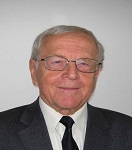
Biography:
Mieczysław Mąkosza, born November 16, 1934 became famous through his pioneering investigations of Phase Transfer Catalysis (PTC) and, subsequently, thanks to his studies of aromatic nucleophilic substitution, in particular Vicarious Nucleophilic Substitution (VNS). Professor Mąkosza studied chemistry at the University of Rostow and then Leningrad (now: St. Petersburg). After graduating with distinction in 1956, he joined the staff of the Department of Chemistry of the Warsaw University of Technology (Politechnika Warszawska). In 1963 he was granted a PhD degree and in 1967 he received a DSc degree. From 1975-1977 he was the Director of the Institute of Organic Chemistry and Technology of the Warsaw University of Technology. In 1979 he was appointed the Director of the Institute of Organic Chemistry of the Polish Academy of Sciences (PAN).
Abstract:
Organic synthesis is the main tool for manufacturing pharmaceuticals, agrochemicals, materials for electronics etc. There are thousands of organic reactions used as tools in synthesis of desired products. Phase-Transfer Catalysis - PTC offers general and most economic technology for execution of many organic reactions on large scale. Moreover it assures minimalisation of energy consumption and formation of industrial wastes. Due to these features PTC should be considered as the greenest technology. In the lecture basic principles, mechanistic features, scope, limitation and selected examples of industrial application of PTC will be discussed.
Veera Gnaneswar Gude
Mississippi State University, USA
Title: Recent Advances in Green (chemistry) Synthesis for Renewable Fuel Production

Biography:
Veera Gnaneswar Gude is a faculty of civil and environmental engineering department at Mississippi State University. My research focuses on developing sustainable and resource-efficient technologies for water and energy production. Our research efforts in low temperature desaination, microbial desalination, biodiesel production, process intensification using microwave and ultrasound techniques have been widely recognized.
Abstract:
Petroleum-based fuels are currently serving the modern world and it has been the case over the past century. However, once considered as inexhaustible, these petroleum sources are diminishing at much faster rate than the natural processes can replenish them due to rapid population growth and industrialization. This combined with several interrelated impending global crises, namely, climate change, chemicals, energy, and environmental pollution, raises the need for alternative energy supplies such as biofuels from renewable resources. Renewable fuel research and process development requires interdisciplinary approaches involving chemists and physicists from both scientific and engineering backgrounds. Efficient synthesis of renewable fuels remains a challenging and important field of research. Embracing the principles of green chemistry might result in a sustainable route for their production. Green chemistry provides unique opportunities for innovation via product substitution, new feedstock generation, catalysis in aqueous media, utilization of microwaves or ultrasound, waste minimization and scope for alternative or natural solvents. The potential of utilizing waste as a new resource and the development of integrated processes producing multiple high value bio-products from biomass is highly desirable to improve the economics of the renewable fuels. This presentation focuses on chemistry related to renewable fuels research. Renewable fuels can be broadly categorized as any fuels that are of biomass origin such as bioethanol, biodiesel, biogas, bio-oils and syngas. Understanding the fundamental chemistry of the renewable fuels and developing appropriate technologies for implementation will provide sustainable solutions for the future. This talk covers the recent advances in the green synthesis of the renewable fuel production.
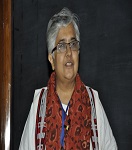
Biography:
Anju Chadha completed her PhD from the Indian Institute of Science, Bangalore, India and Postdoctoral studies as a Fogarty Fellow from NIH, NIDDK, Bethesda, MD, USA and an Alexander von Humboldt fellow in Germany. Following this she worked in the R & D Center for a Pharma Company in India. She is presently a Professor at the Department of Biotechnology, IIT Madras, Chennai, India, a premier academic institute. She has published more than 80 papers in reputed journals and along with her students, is actively involved in research in biocatalysis, enzyme mechanisms, ‘green’ chemistry, chirotechnology and biosensors.
Abstract:
Biocatalysis, an important ‘green’ component of sustainable chemistry, primarily, implies the use of enzymes in synthetic organic chemistry. It has been projected that the industry method of synthesizing 20% of the global production of non-natural chemicals by 2020 will employ biocatalyst- mediated reactions. The use of whole cells of Candida parapsilosis ATCC 7330 has been effectively used by us to generate a variety of optically pure sec. alcohols and amines by deracemisation and asymmetric reduction, which have also been used as chiral synthons in a larger synthetic scheme. This yeast has been shown to oxidise primary and sec. alcohols and also has acylase activity. All these results in high ee [up to 99%] and yields [up to 85%]. Parallely, we have crystallised a carbonyl reductase from the Candida in order to understand the enantioselectivity of the enzyme at the molecular level. The talk will summarize our results.
Jin-Ming Lin
Tsinghua University, China
Title: Generation of Droplets of Liquid for Mass Spectrometry
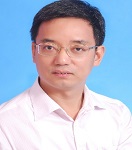
Biography:
Jin-Ming Lin was graduated from Fuzhou University in 1984 and received a PhD at Tokyo Metropolitan University in 1997. He had studied and worked in Showa University and Tokyo Metropolitan University during 1992-2002. He was selected as “100 Talented Researcher Program” for Chinese Academy of Sciences in 2001 and worked in Research Center for Eco-Environmental Sciences, Chinese Academy of Science during 2002-2004. He is currently a Professor of Tsinghua University since 2004. He is a Deputy General-in-Secretary and Director of Mass Spectrometry Division of Chinese Chemical Society, a Member of council of Chinese Society for Chromatography Science and service as Editorial Boards for six international journals. He received 23 awards for his contributions in microfluidics, chemiluminescence and separation science. He is the Author and Co-author of 318 original research papers published in international journals, 28 reviews, 4 books and 41 patents. His current research is focused on microfluidic device, ultraweak chemiluminescence, and sample pretreatment for LC-MS and GC-MS.
Abstract:
Applications of droplets for studies in small culture volume, especially microdroplets in microfluidics, have aroused the interests of physical, chemical and biological fields. During the last 10 years, various methods for forming and manipulating small droplets have been developed. Each droplet provides a compartment in which species or reactions can be isolated and therefore is suitable for quantitative studies. Furthermore, high-throughput experiments with extremely small volumes, single molecules, or single cells can also be achieved through droplet-based systems. Ambient ionization, which aims at direct sampling of analytes in the ambient state, has emerged rapidly in recent years. Among the latest progresses in atmospheric pressure Electrospray-based Ionization (ESI) techniques, paper-based ESI is highly promising in consideration of its simplified protocol of sample preparation and equipment. Capability of paper-based ESI-MS for the analysis of drugs, peptides, nucleotides and phospholipids in complex biological fluid samples, such as whole blood and raw urine, has been demonstrated recently. And the transport and ionization mechanisms, the appropriate substrate and solvent for effective paper-based ESI were investigated. Therefore, coupling microfluidics and mass spectrometry can combine the advantages of these two techniques, offering a new platform for scientific research. In this work, a paper, spray mass spectrometry combined with droplets generated by gravity and electrostatic attraction, microfluidic chip, and inkjet methods, was developed. The qualitative and quantitative analytical performances of this technique for single droplet were demonstrated. This manually controlled interface is straightforward, low-cost and simple to implement. Moreover, paper spray ionization mass spectrometry hold promises in direct analysis of real biological/chemical microreaction samples because of its tolerance with complex matrix. As a proof-of-concept example, the droplet-based acetylcholine hydrolysis were carried out to demonstrate the validation of our method for direct analysis of micro-chemical/biological reactions.
Serkan Sayin
Selcuk University, Turkey
Title: Catalytic affinities of magnetic nano-Fe3O4-adorned calix[n]arene

Biography:
Serkan Sayin received his PhD degree in organic chemistry in 2013 from Selcuk University, Turkey. Currently, he has been working on an international project, which titled with Novel Photoelectrochemical Cells with Overall Water Splitting Using Polymeric Bridged Calix[n]arene/Cyanin Dye/IrO2 Nanoparticle Arrays on Gold Electrodes, as an active researcher who awarded with a Postdoc Scholar in the project. His research focuses on the synthesis, derivatization and characterization of supramolecular compounds such as cyclodextrins and calixarene derivatives. Furthermore, he experts on the synthesis and characterization of flavin derivatives, and catalyst development, phase transfer-reaction and cation, anion recognition studies, magnetic nanoparticles, gold nanoparticles, enzyme immobilization and kinetic resolution studies. He has authored over 32 articles in peer reviewed journals and 1 book chapter.
Abstract:
Not only magnetite properties, but easily also tunable surface modification of iron oxide nanoparticles adorning with diverse core sized have provided them potential applications in many fields such as bioseparation, tumor hyperthermia, Magnetic Resonance Imaging (MRI), diagnostic contrast agents, magnetically guided site-specific drug delivery agents, biomolecules immobilization, and etc. Iron oxide nanoparticles, which have gained more attention on, has been also employed as supports for selectively functionalized calixarene derivatives, which are mostly effective ionophores for several toxic as well as carcinogenic water contaminant anions or cations but unfortunately soluble in water. Due to the water solubility issue, such calixarenes could not have used as an extractant, however, acquiring magnetic properties to calixarenes, the solubility problem was handled as well as separation and reusable processes became an easy task. Besides of their extraction capabilities towards such ions, calix[n]arene-grafted iron oxide nanoparticles have been extensively used in the encapsulation reaction of Candida rugosa lipase in order to enhance the catalytic activity and enantioselectivity of lipases in the hydrolysis reaction of some racemic pro-drugs. The present work is concerned about construction of several magnetically recoverable Brønted acidic calix[n]arene derivatives by adorning calix[n]arene sulfonic acids that substituted with different groups onto silica coated magnetic nanoparticles regarding to provide magnetic properties. In this lecture is shown how the present Brønted acid type calix[n]arene-grafted magnetic nanoparticles are capable, and would be a pioneer as supramolecular acid catalysts in the coupling reaction of electron-rich arenes with some alcohols in water.

